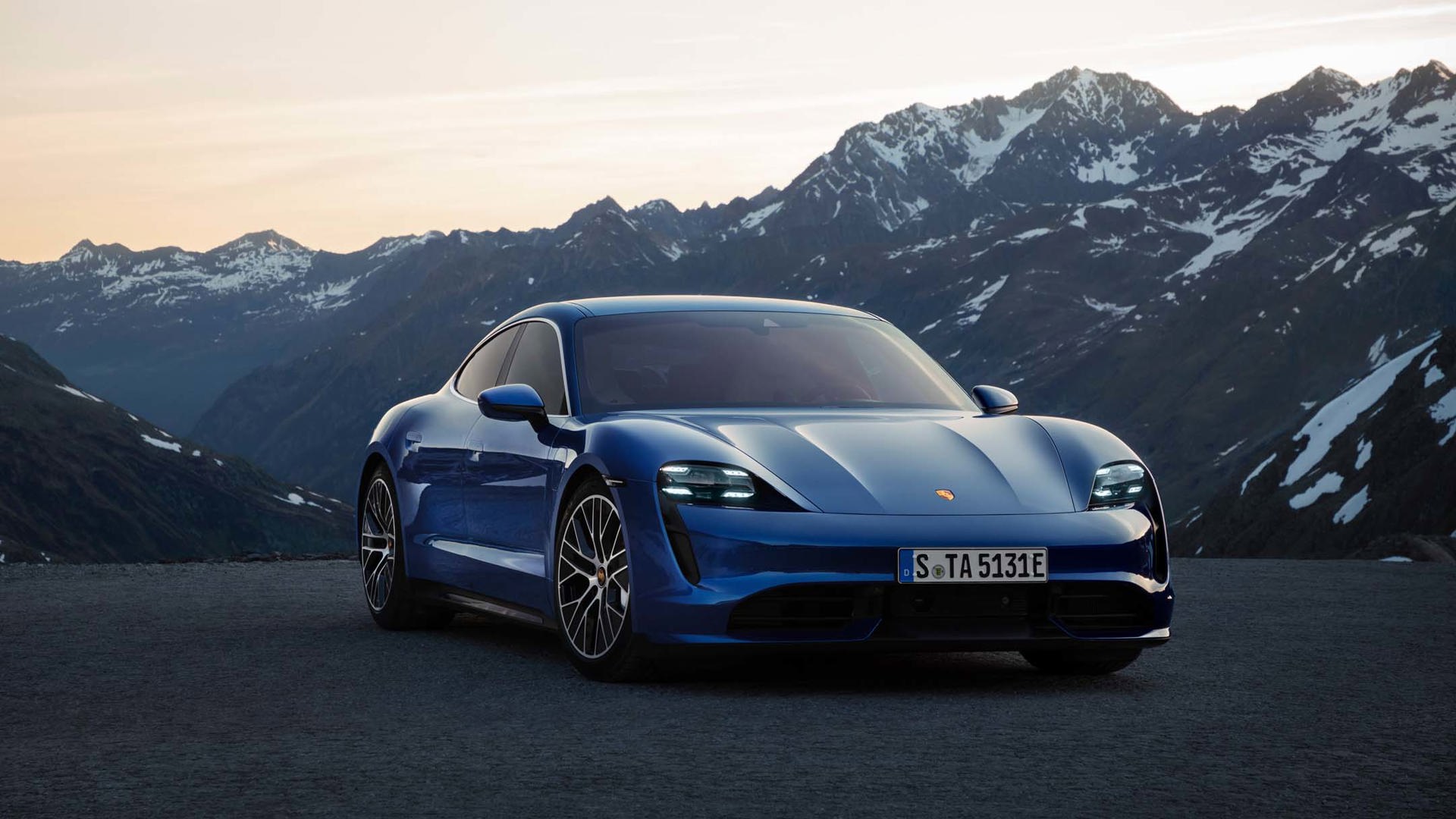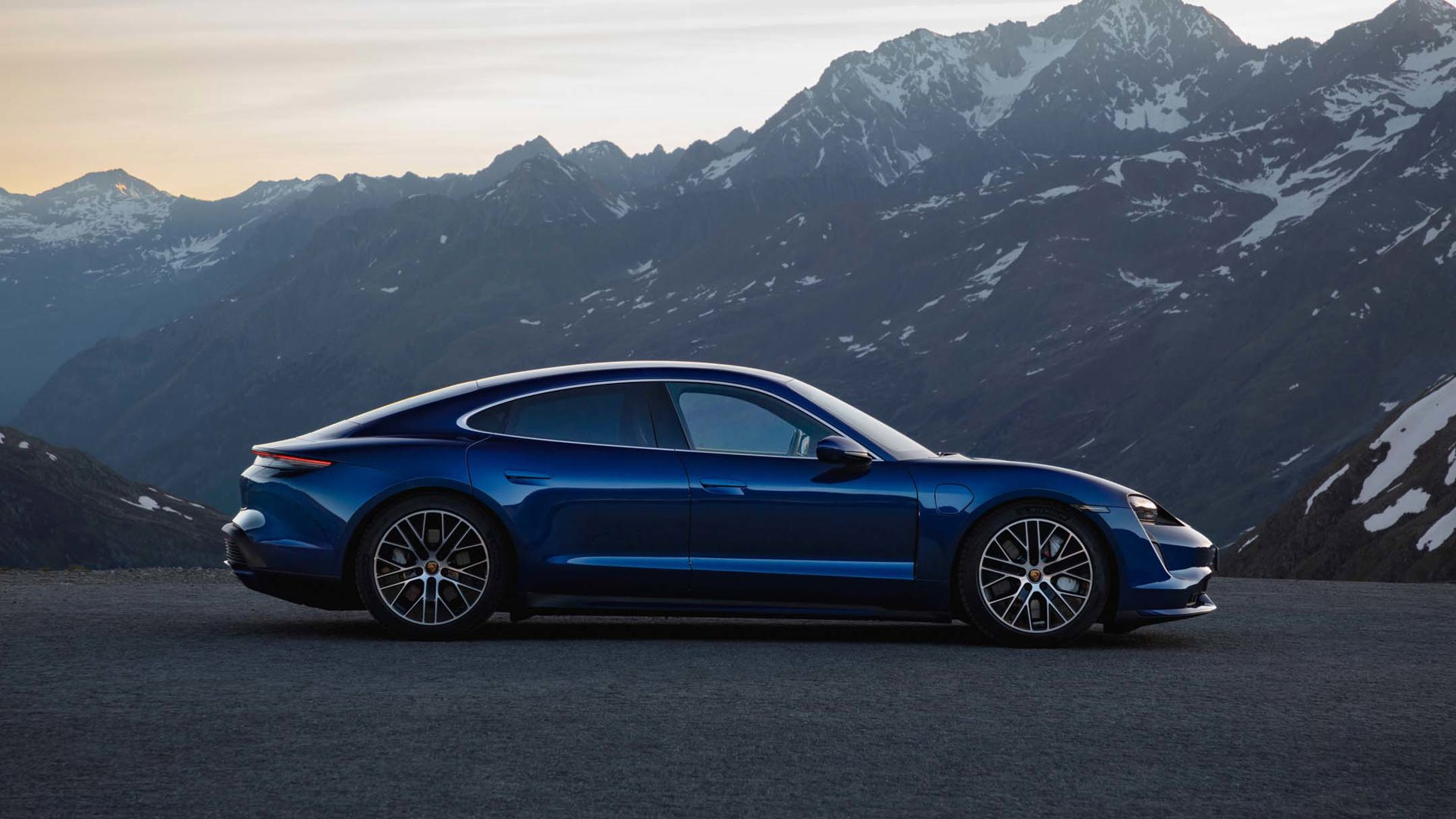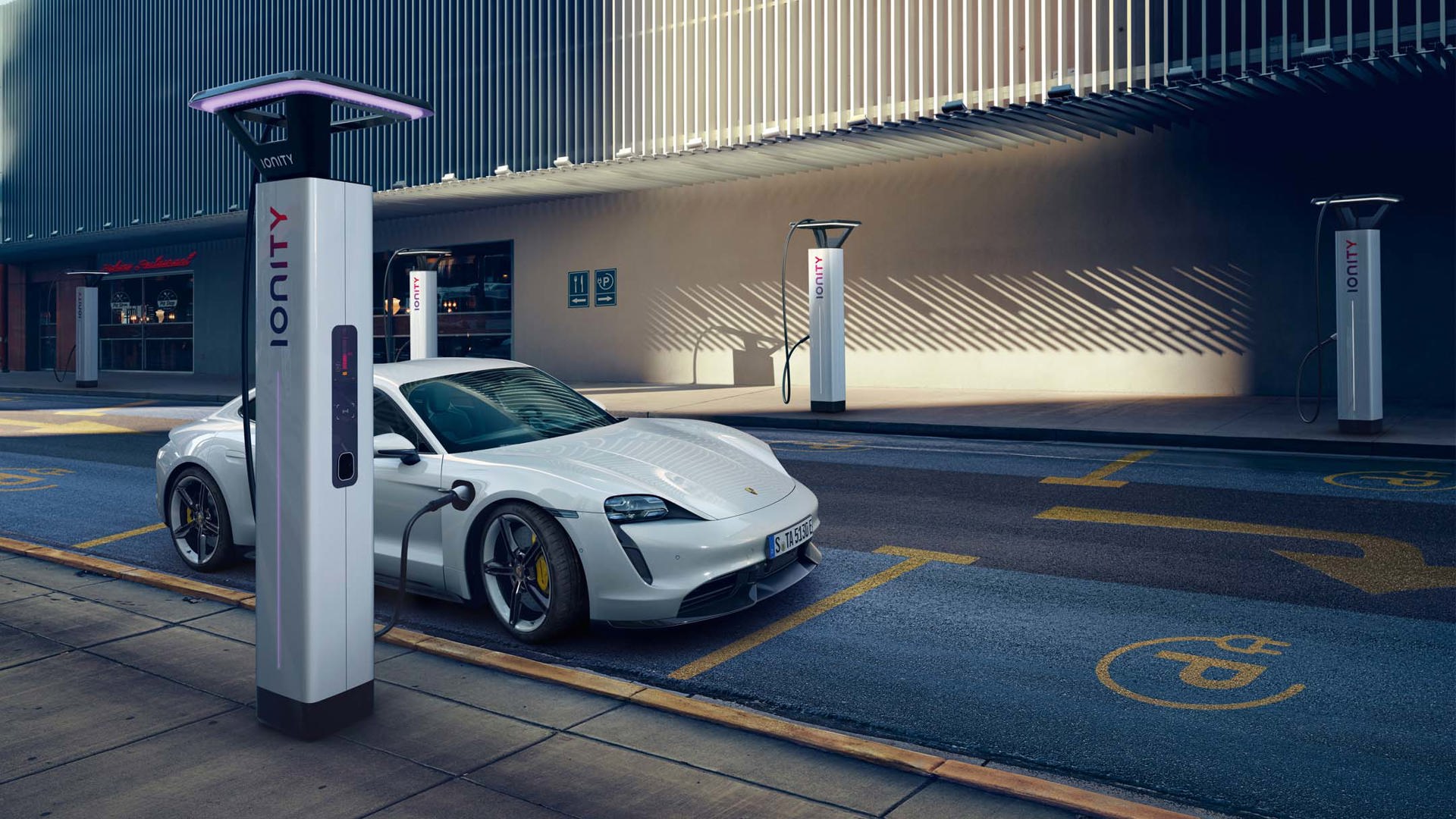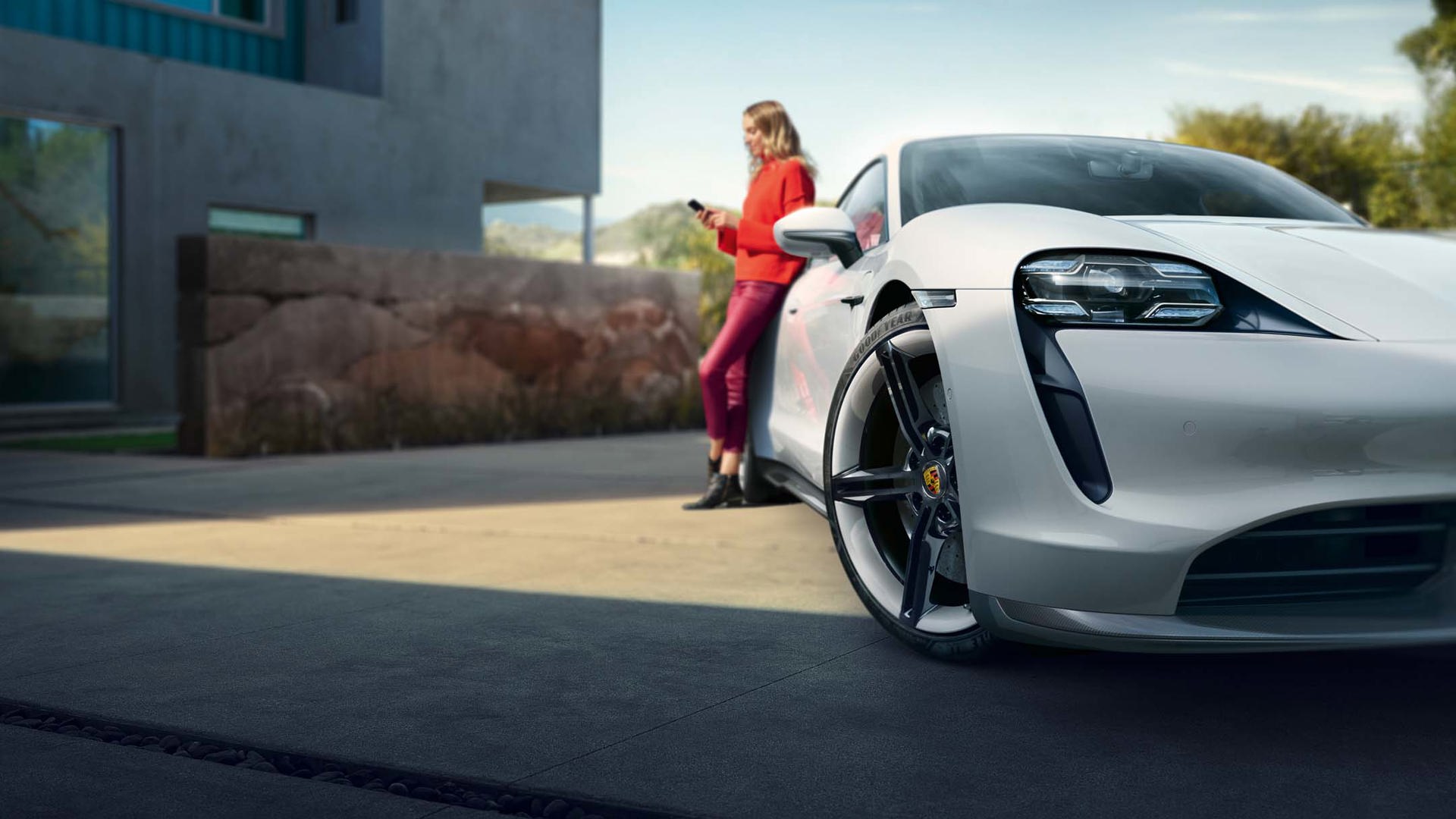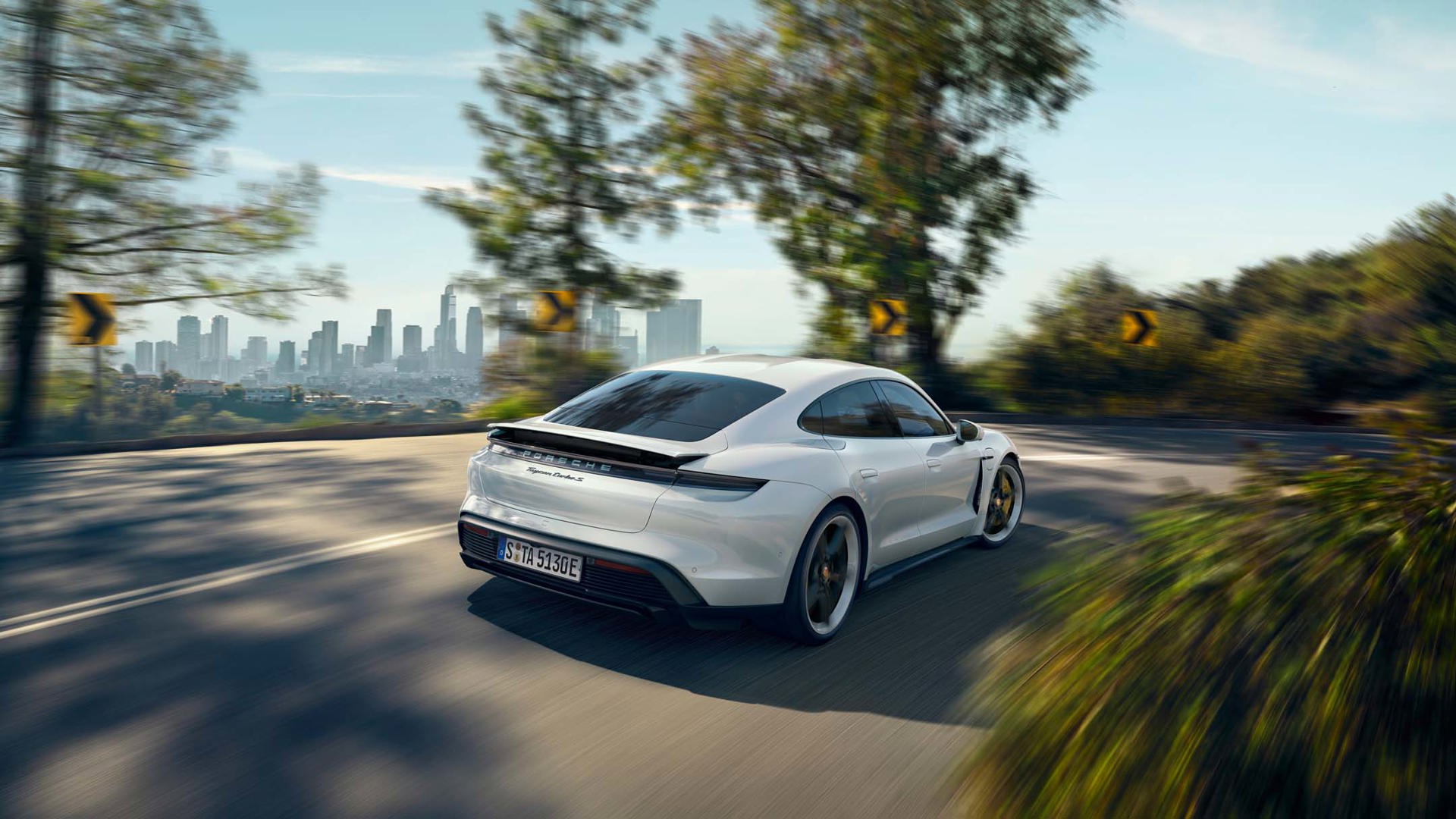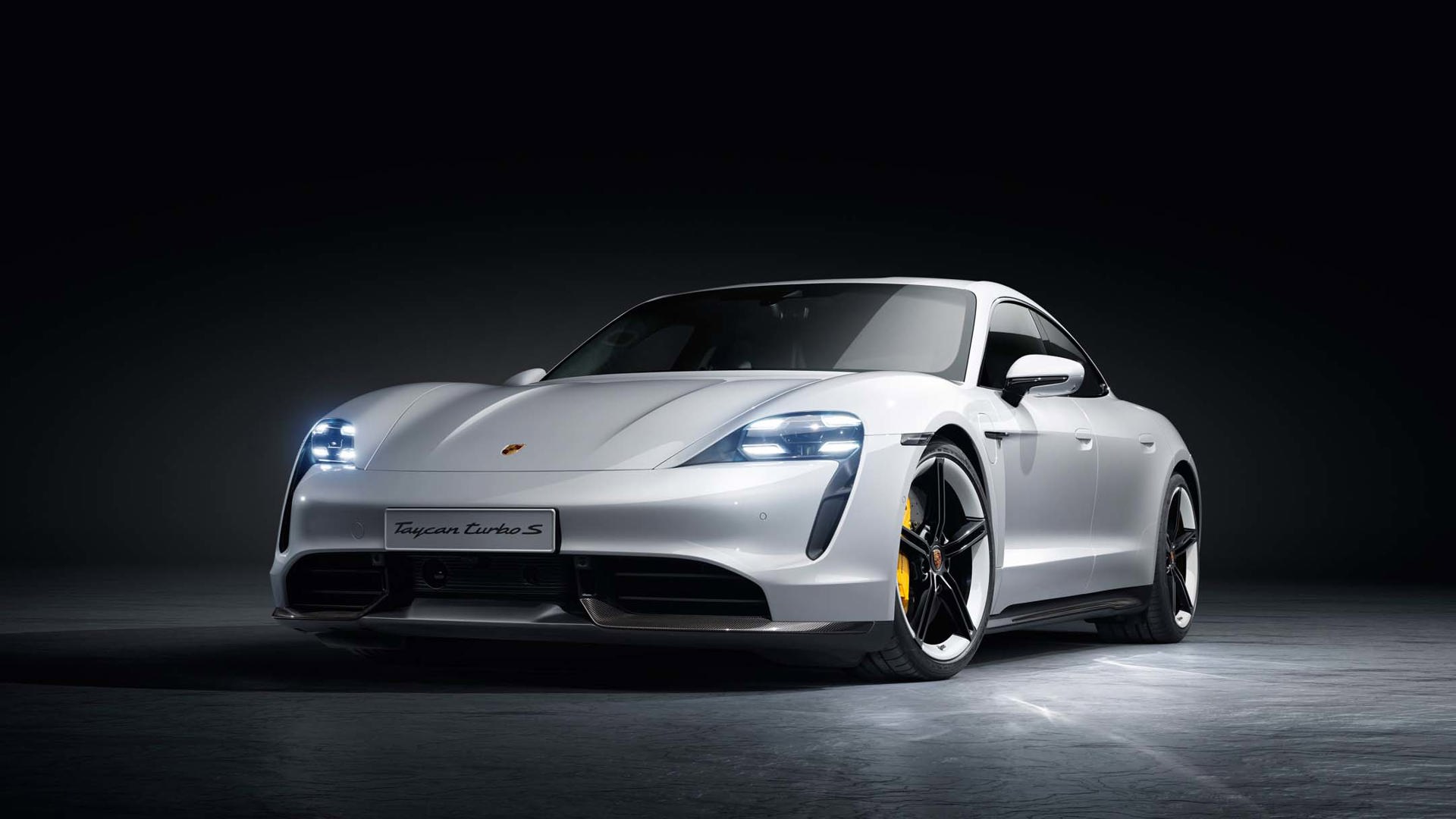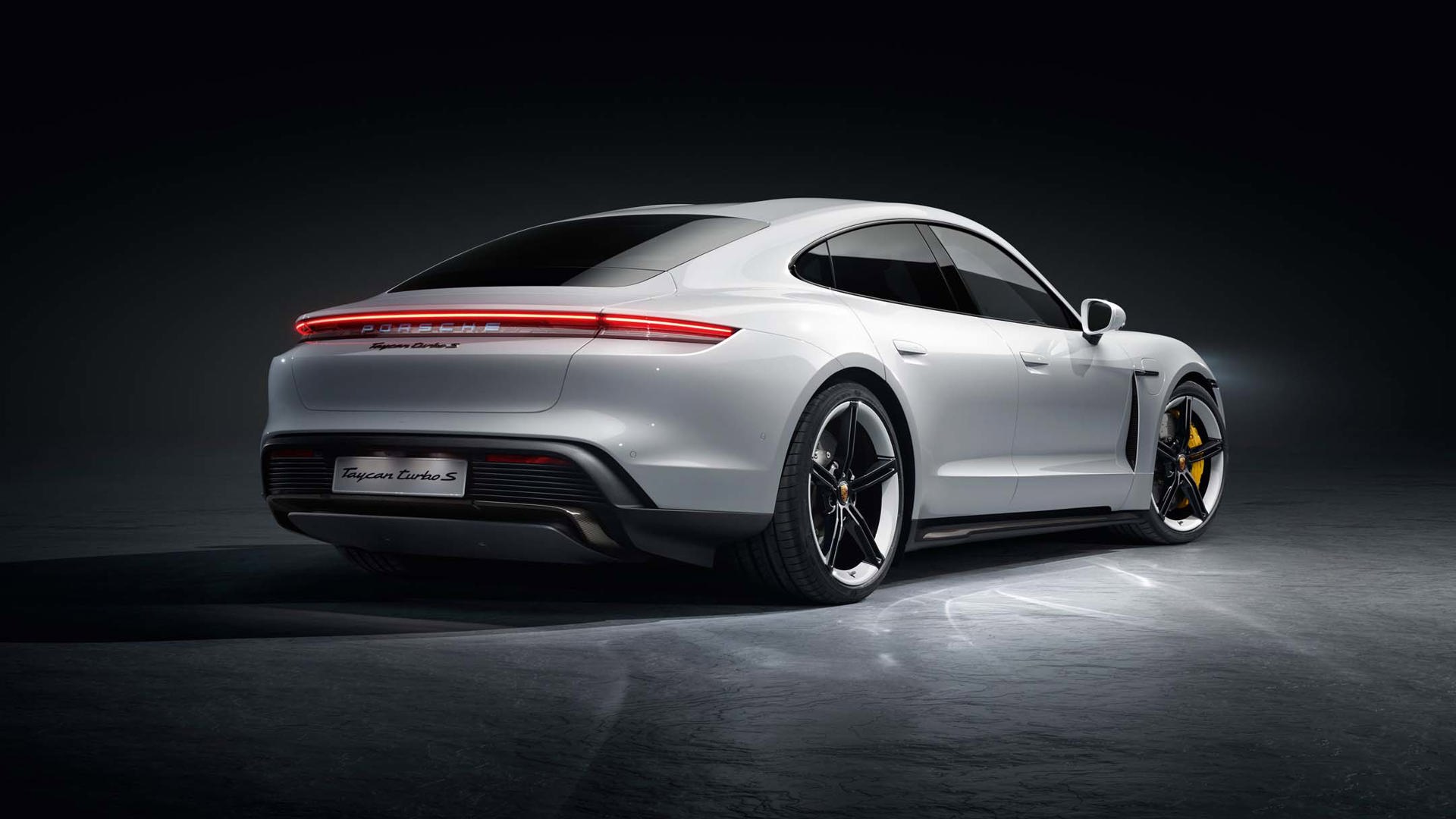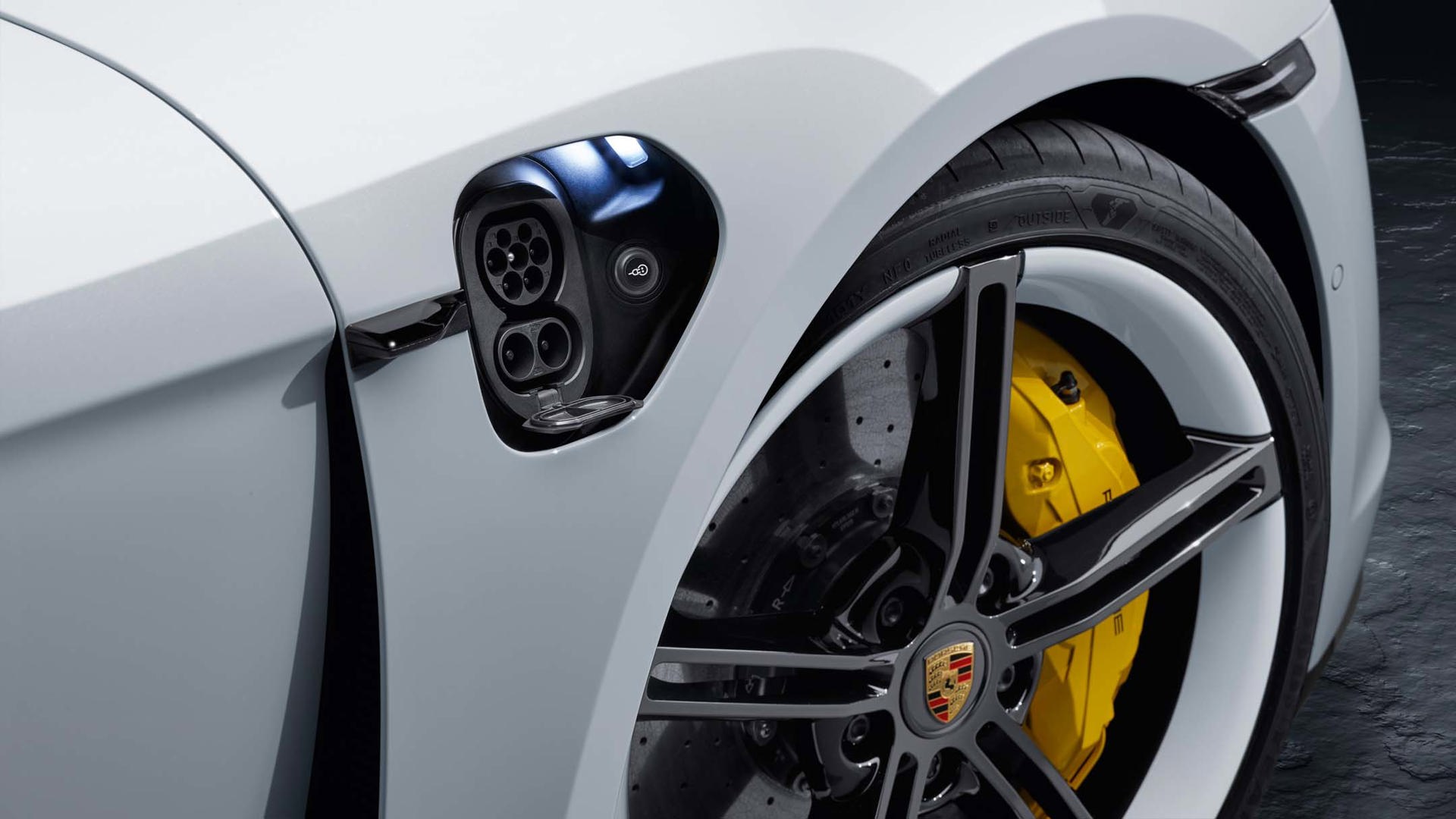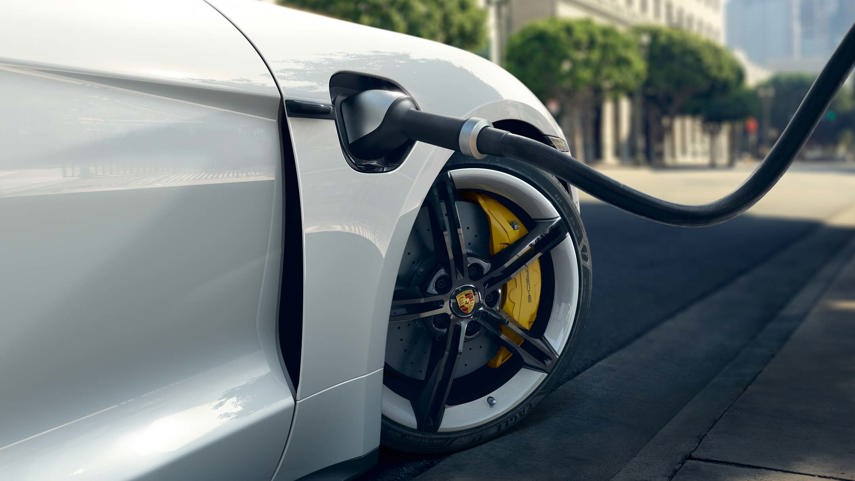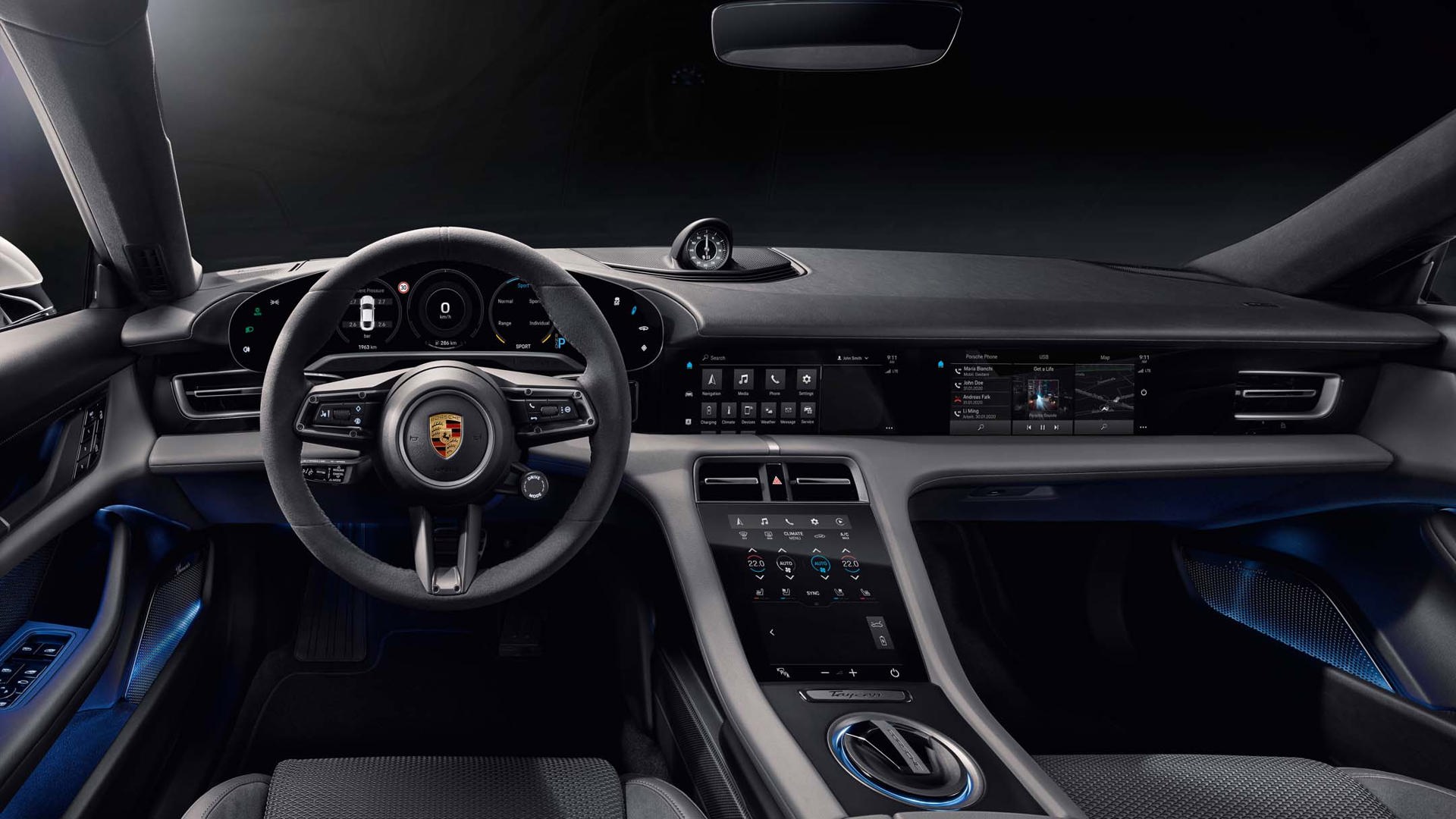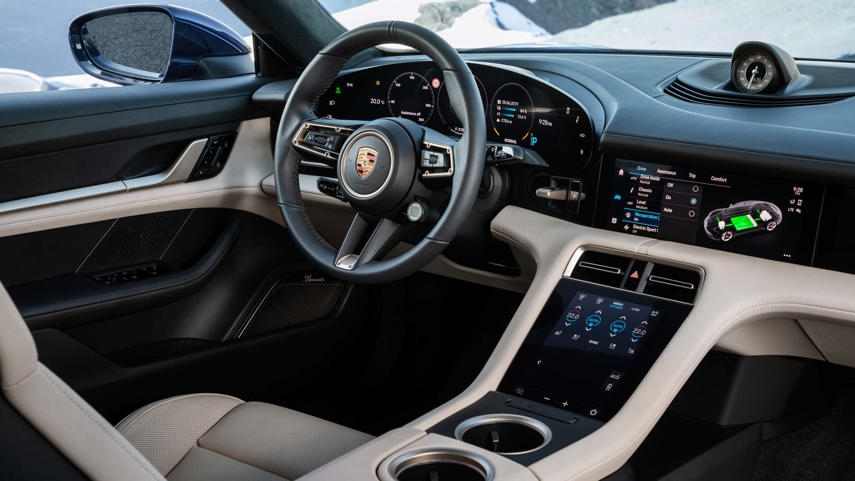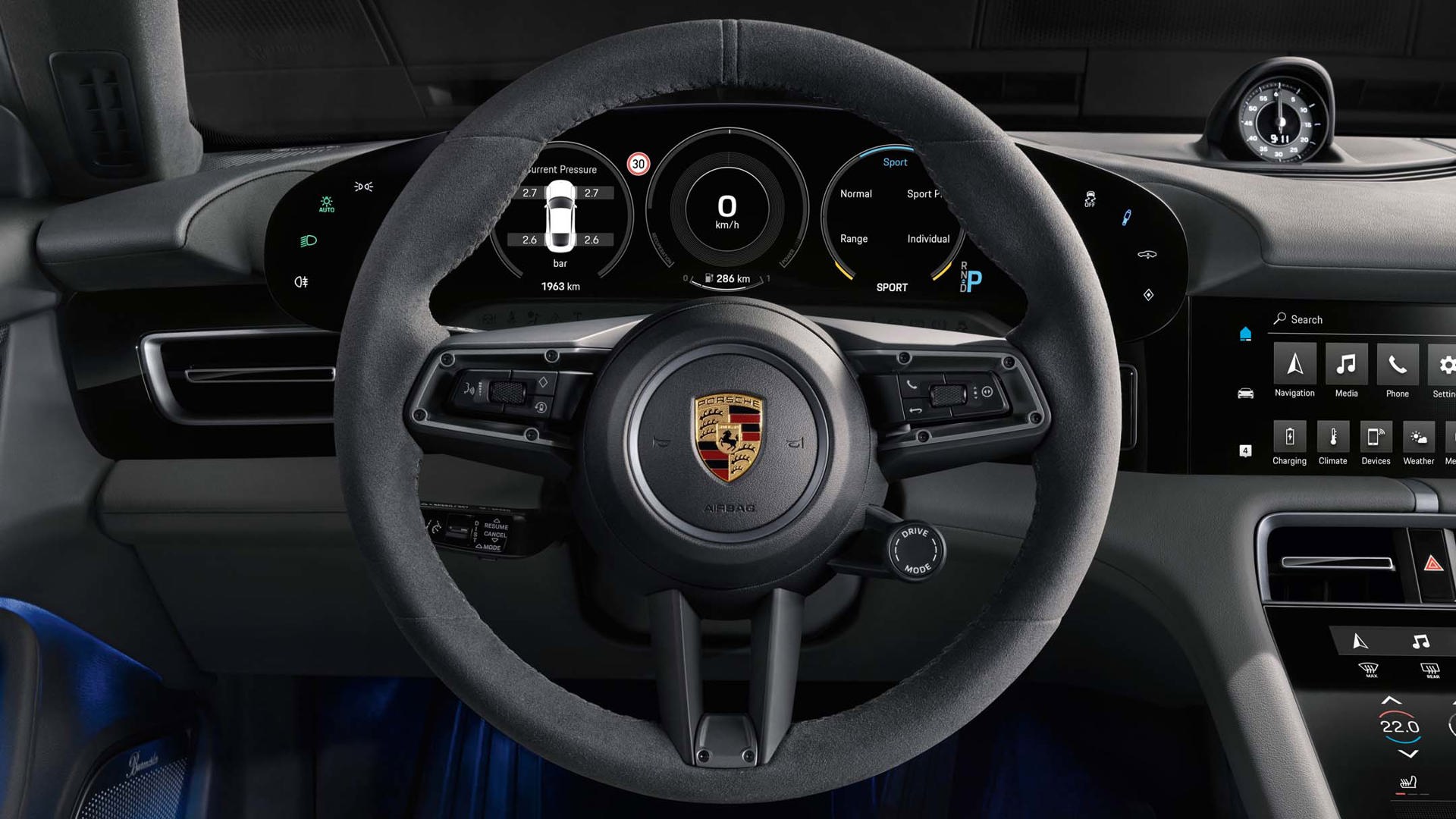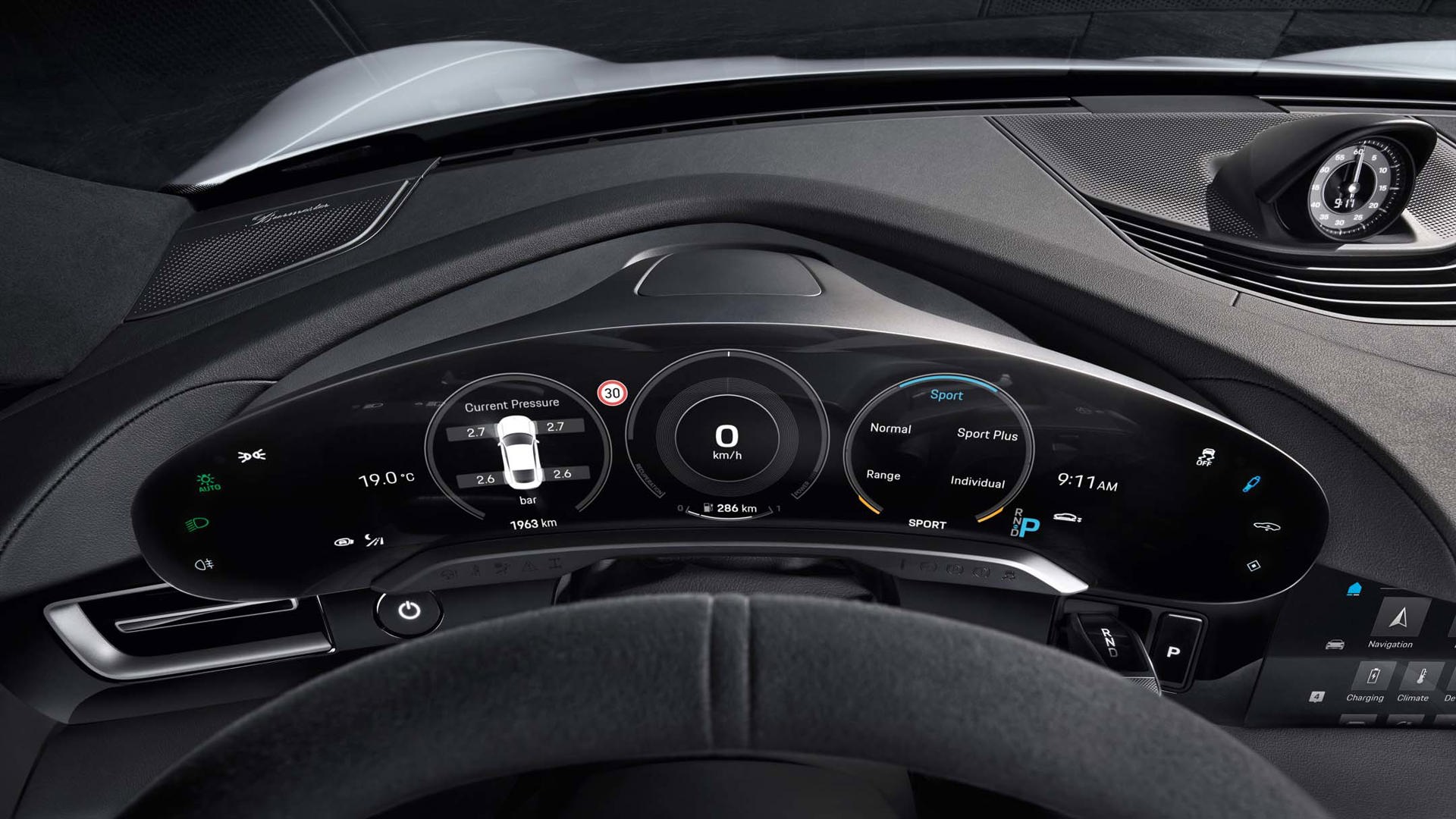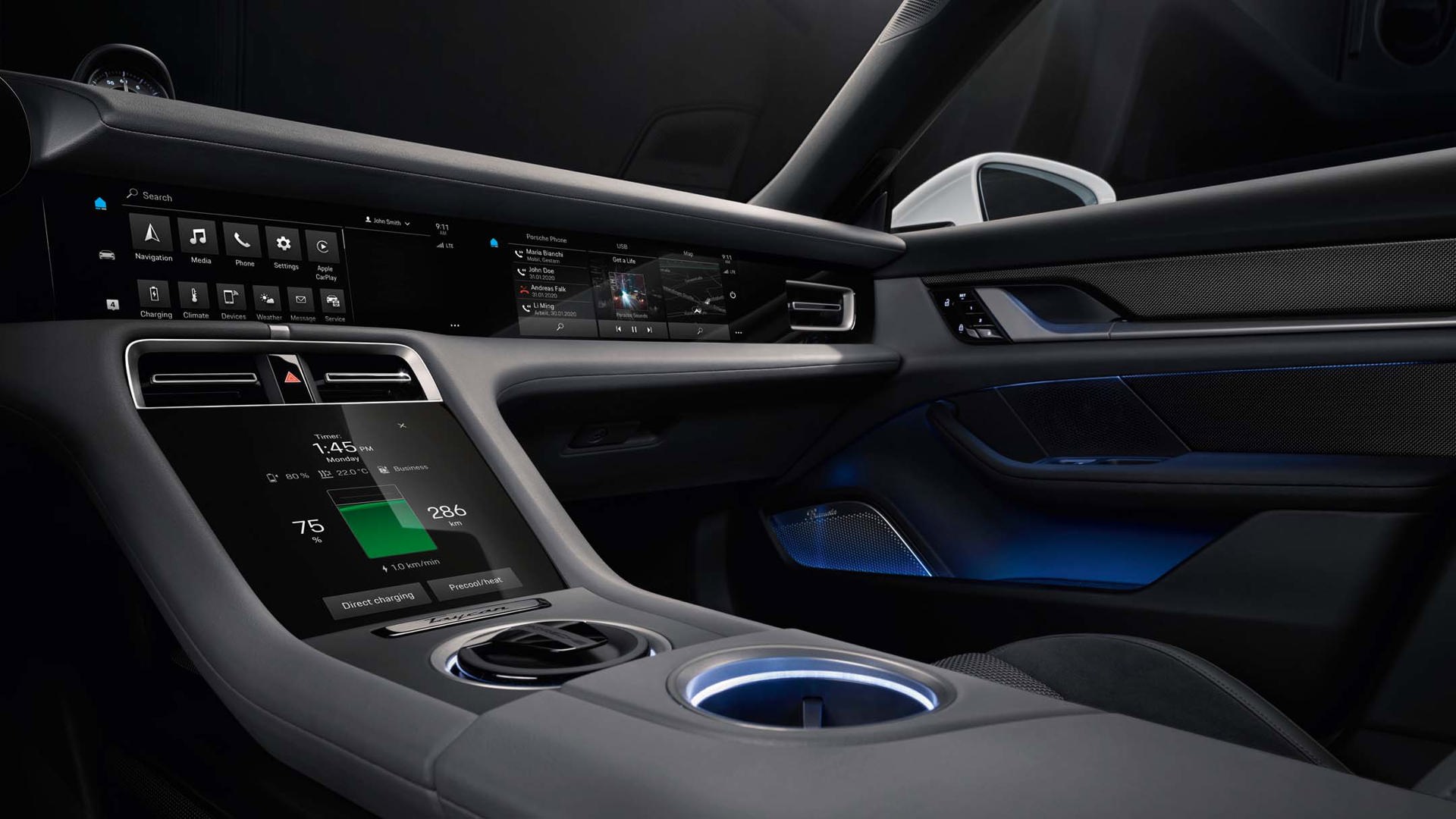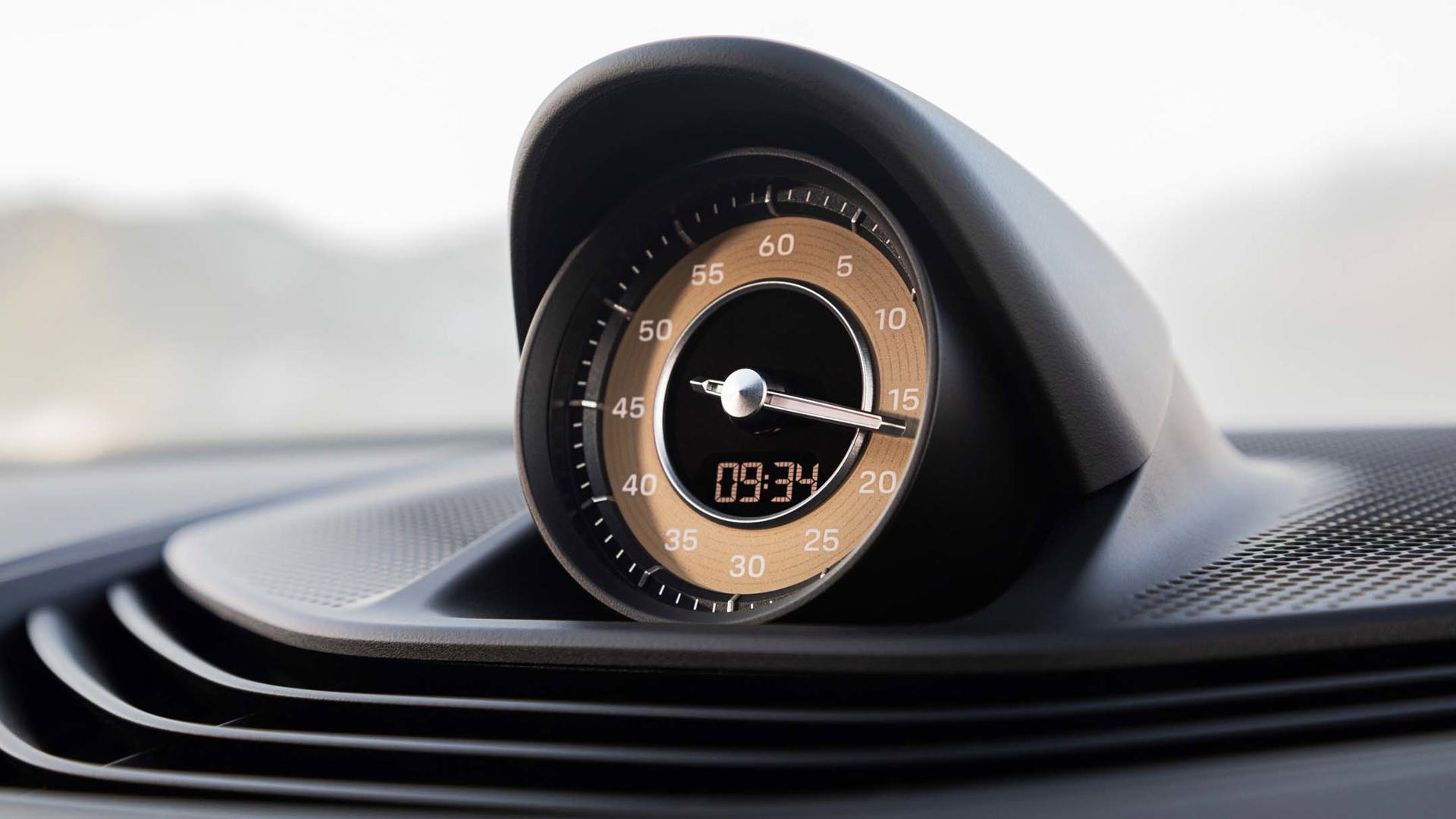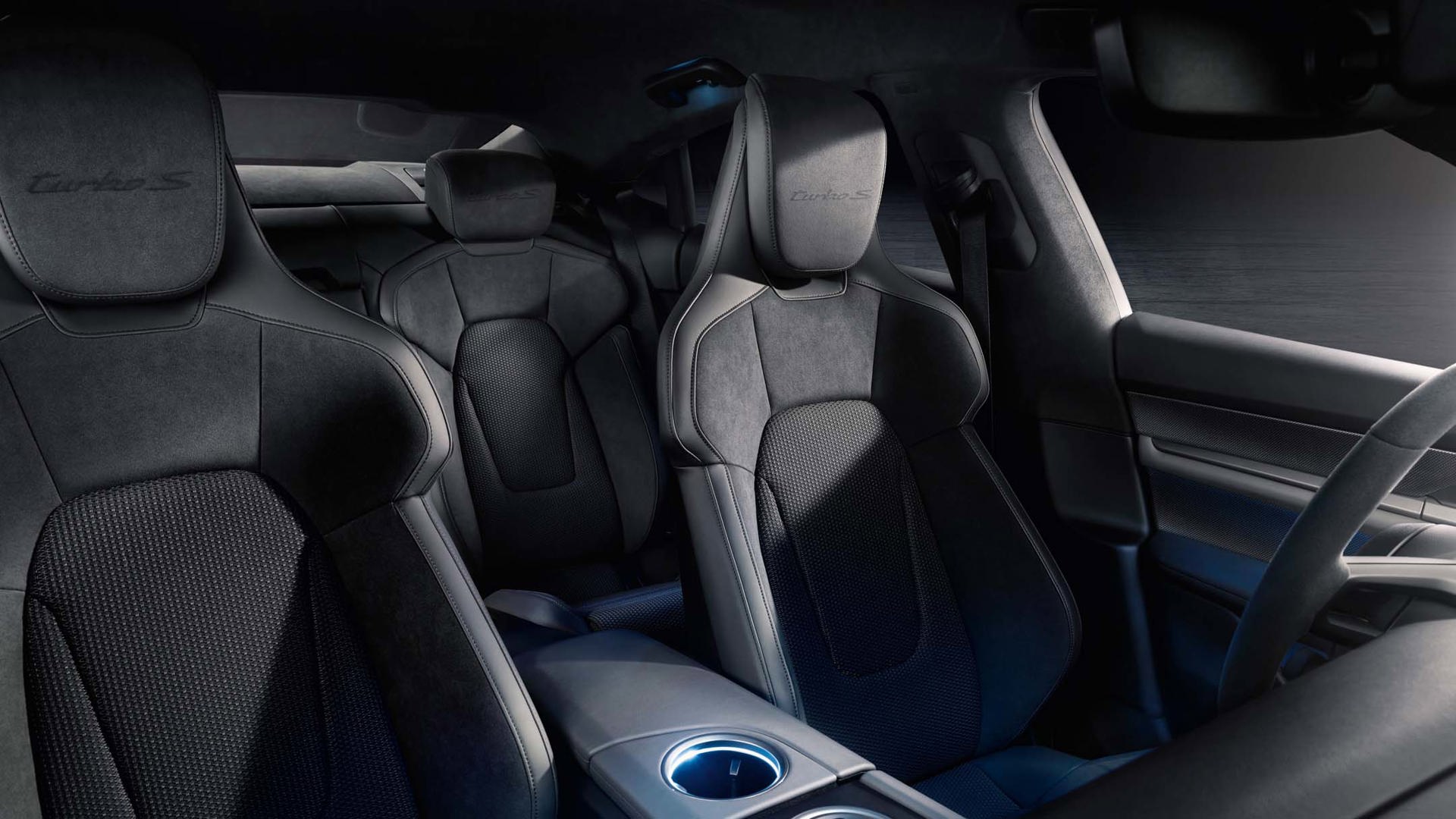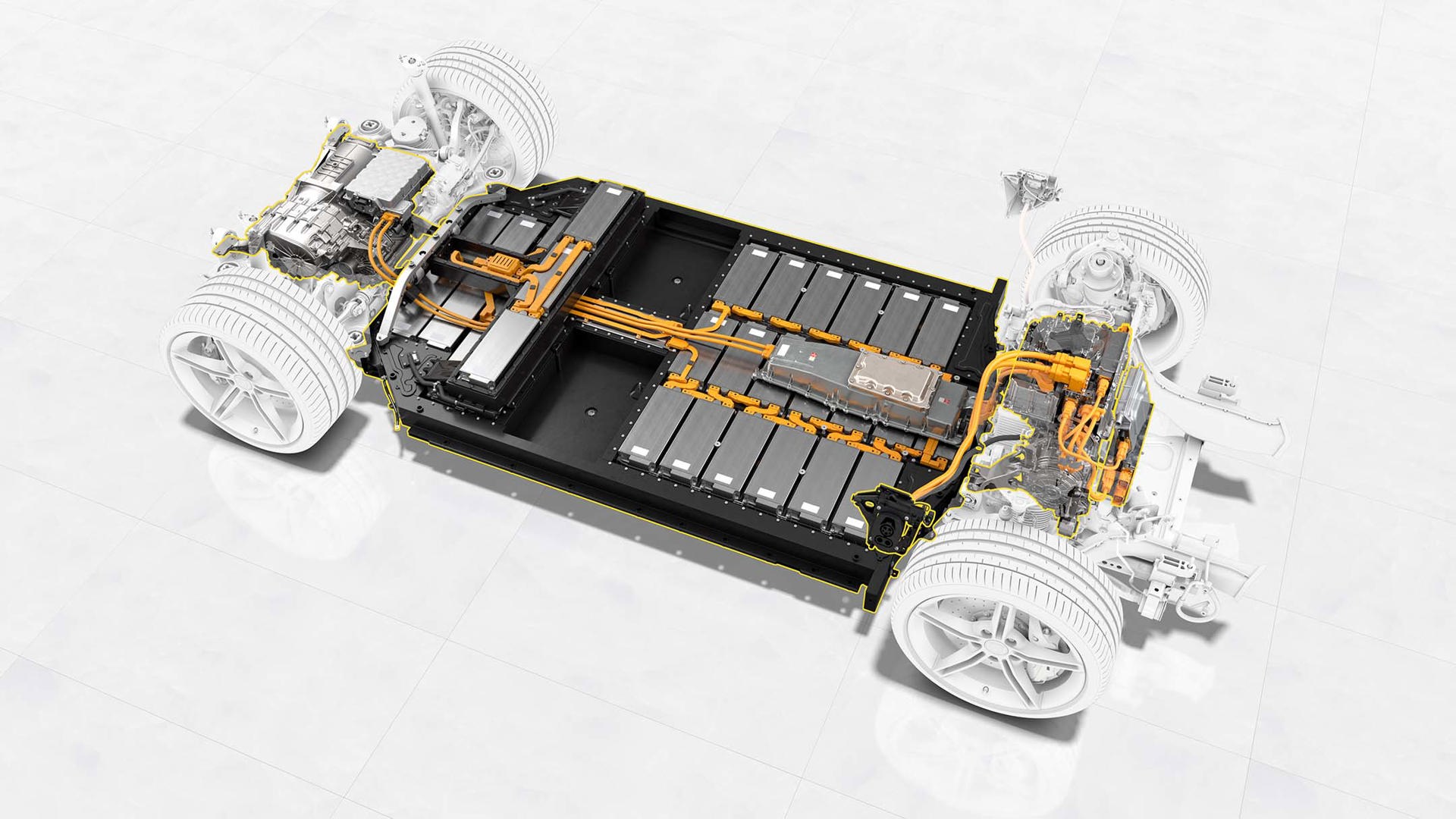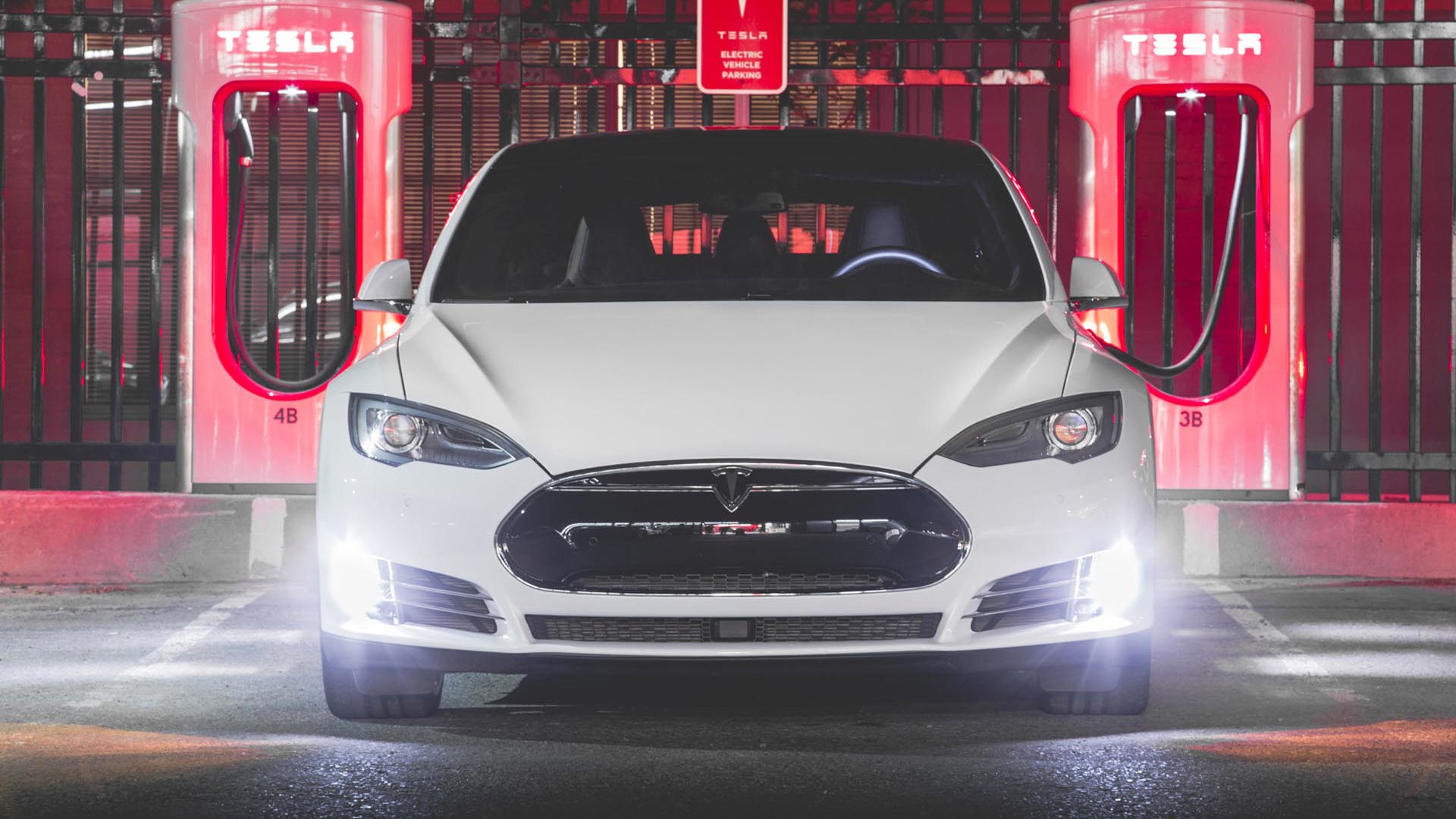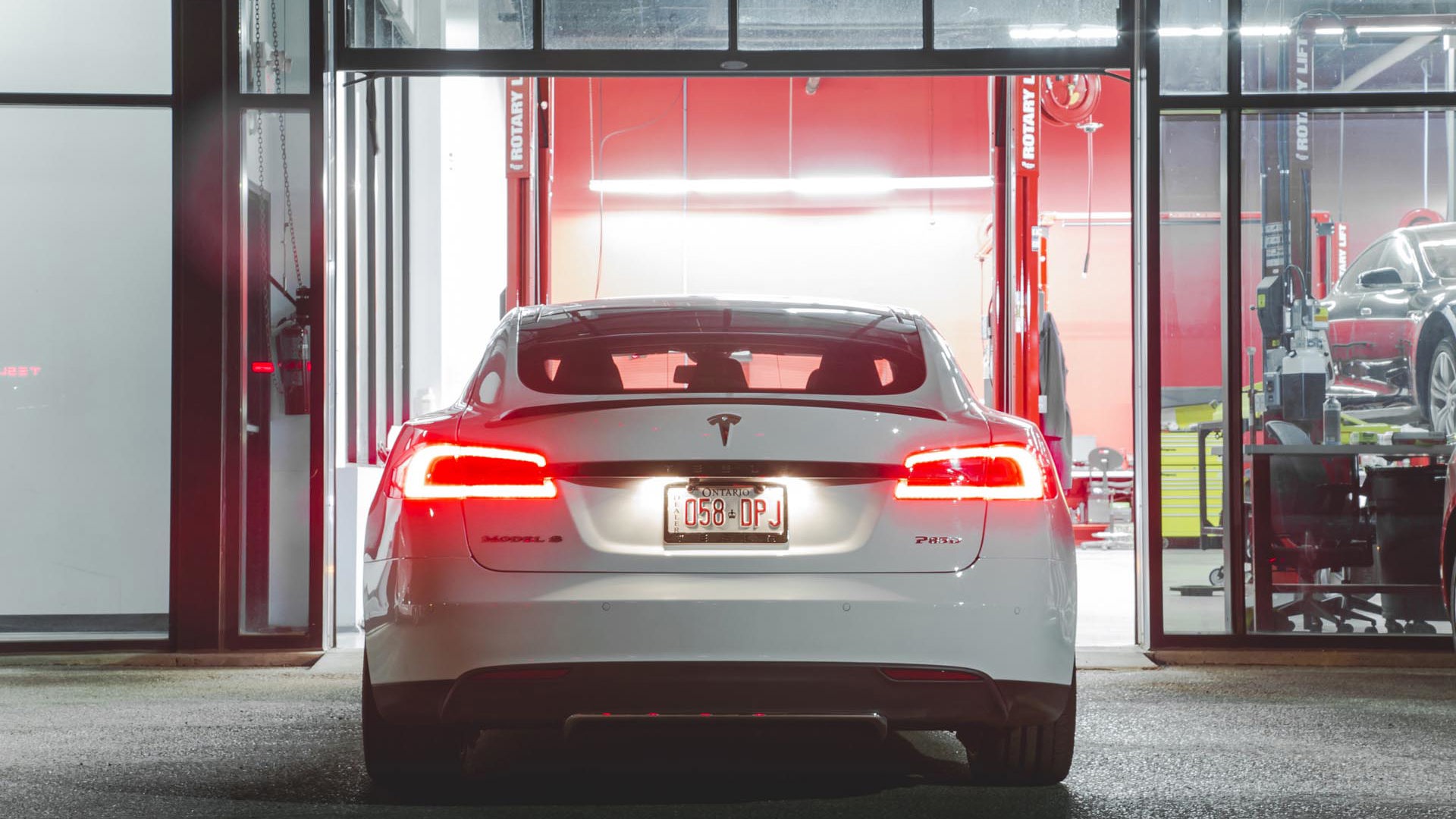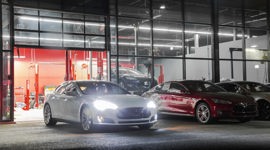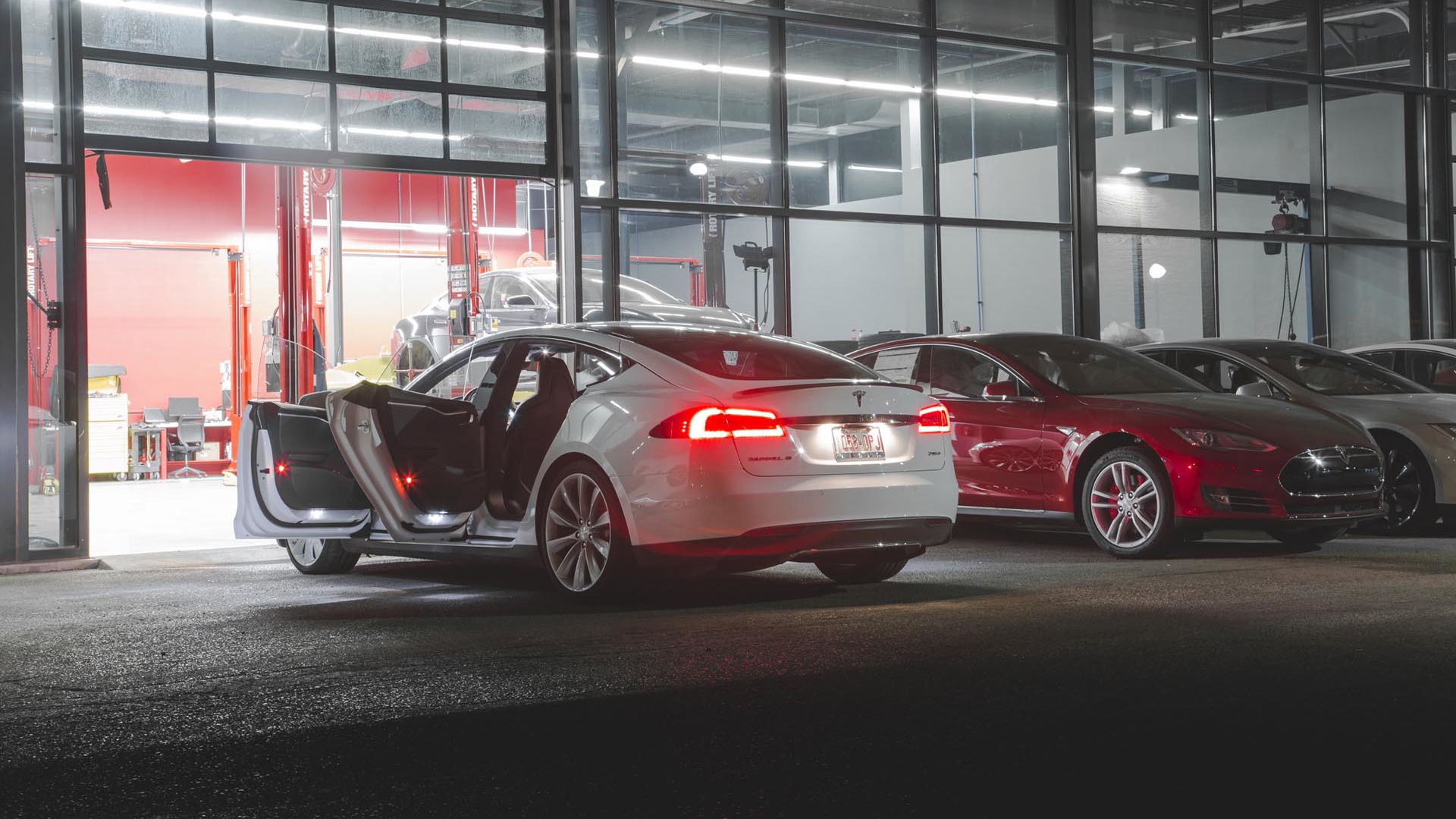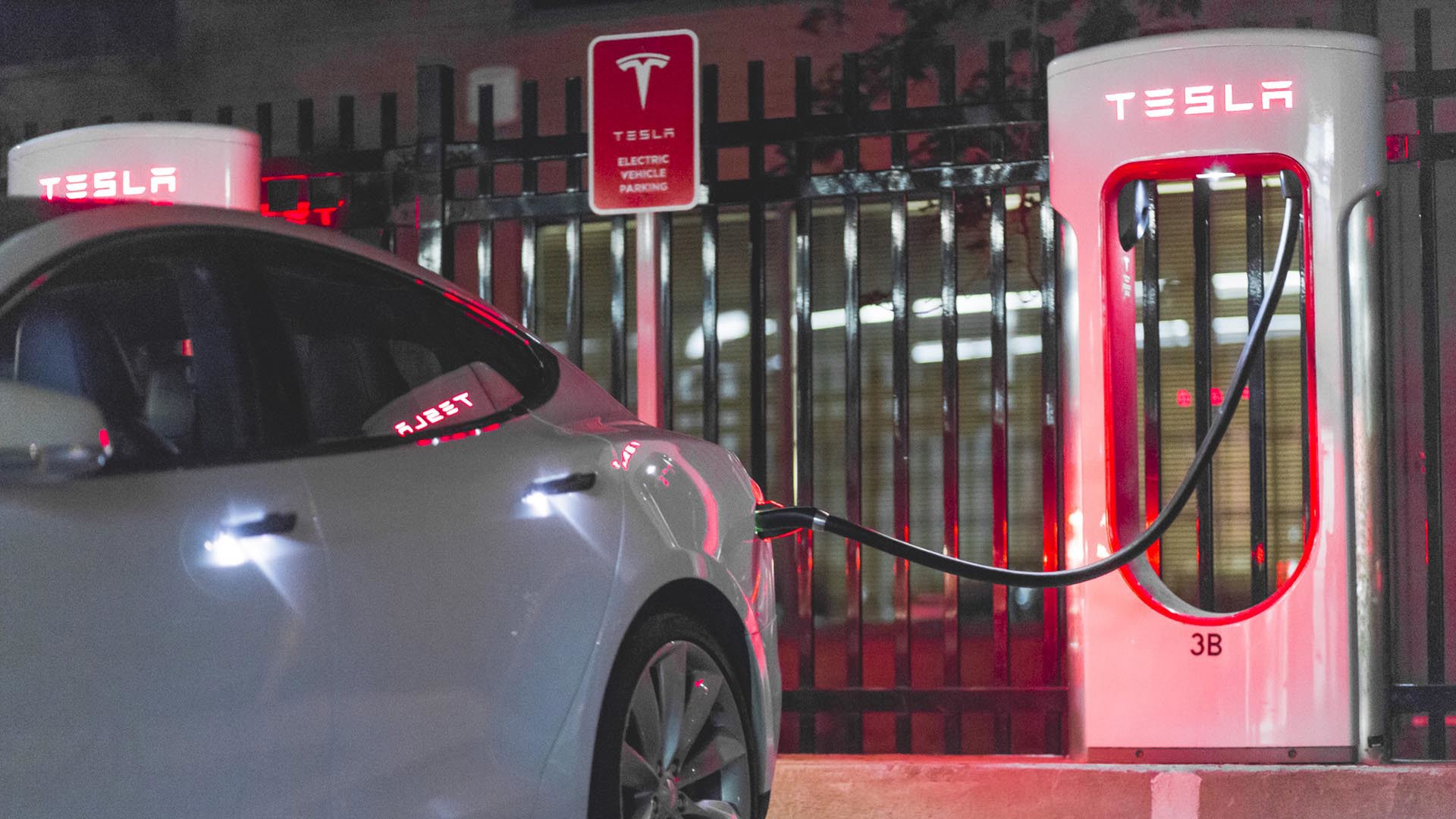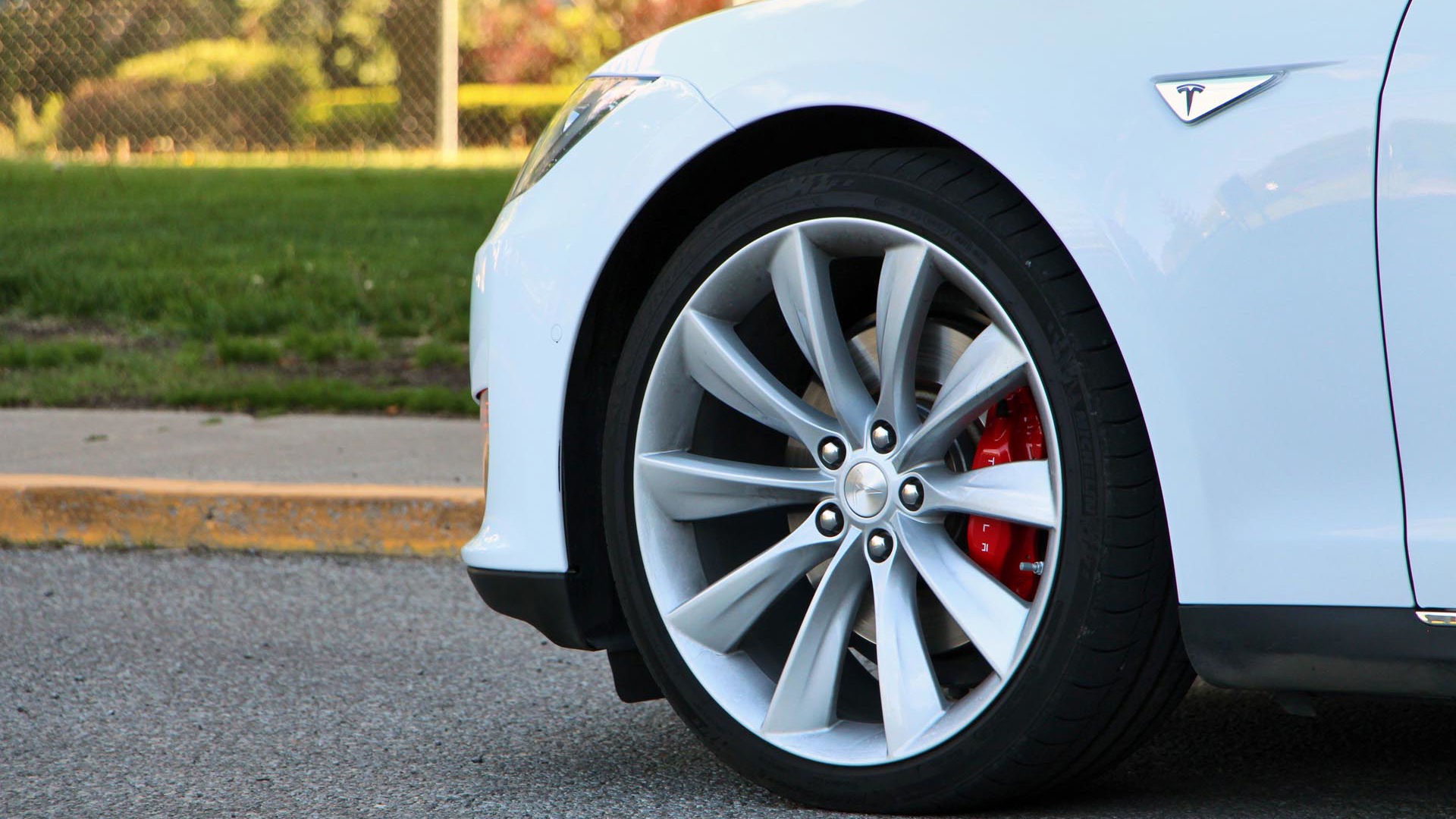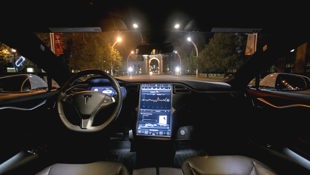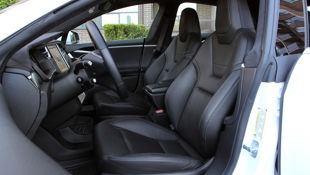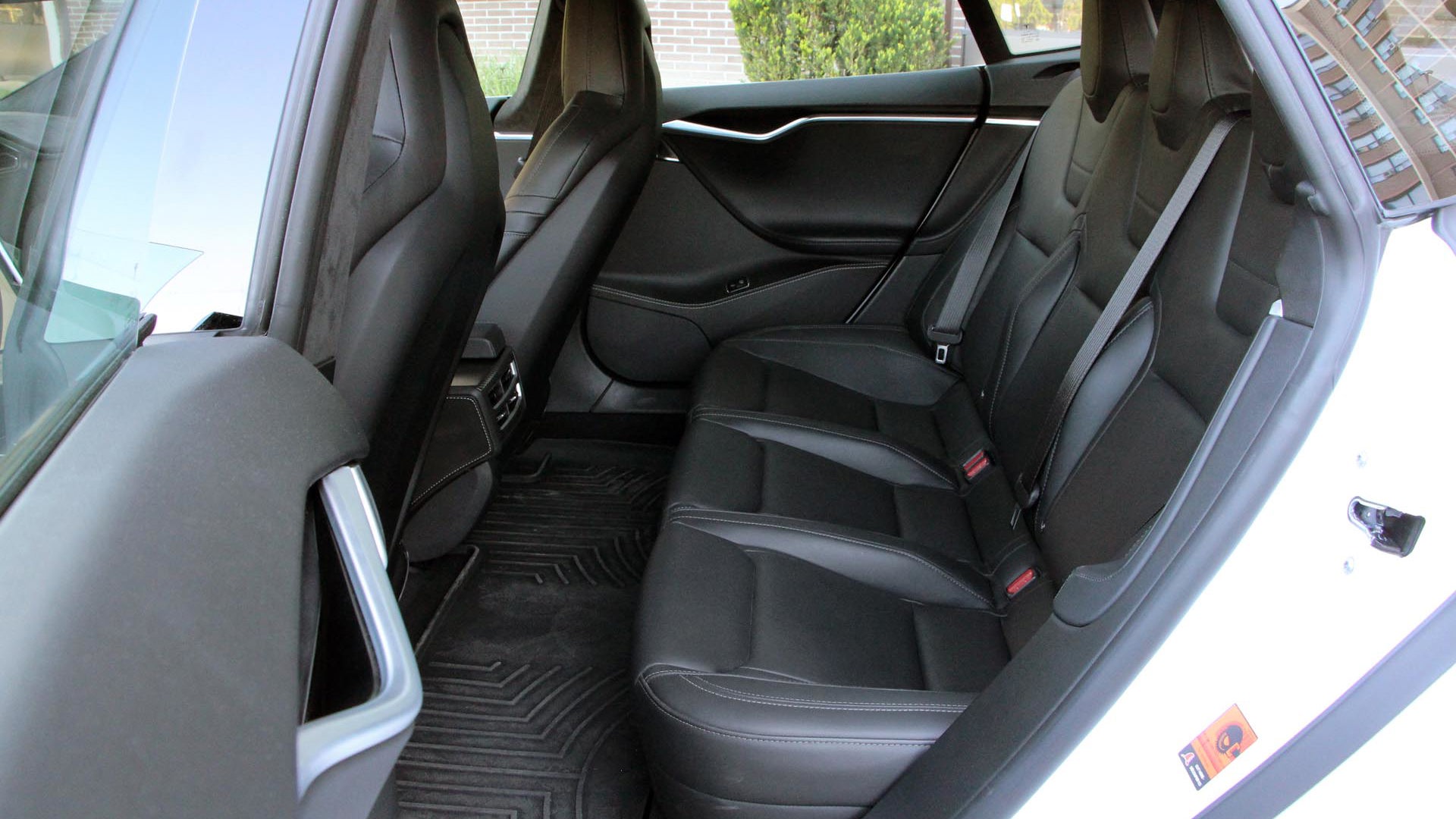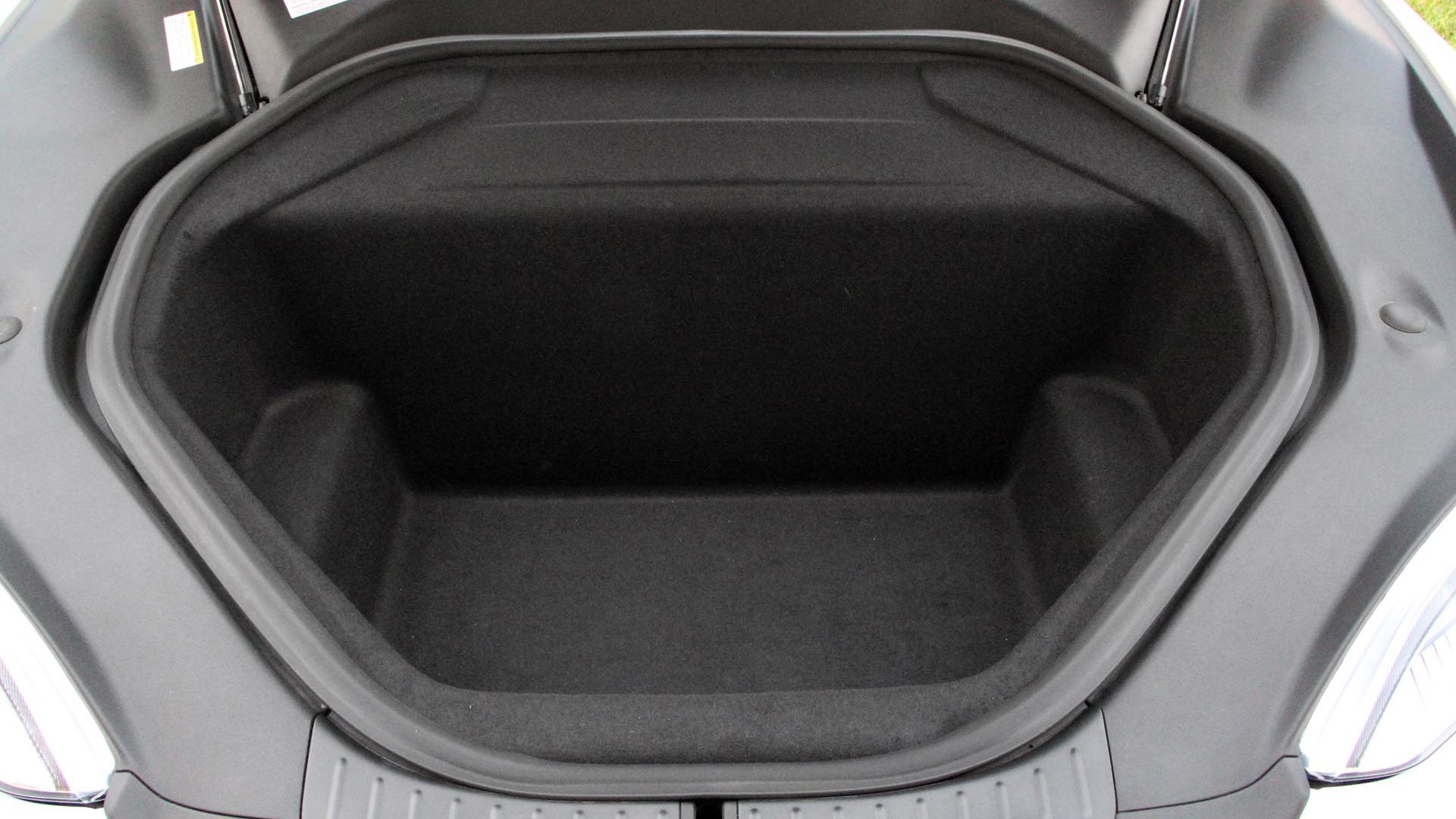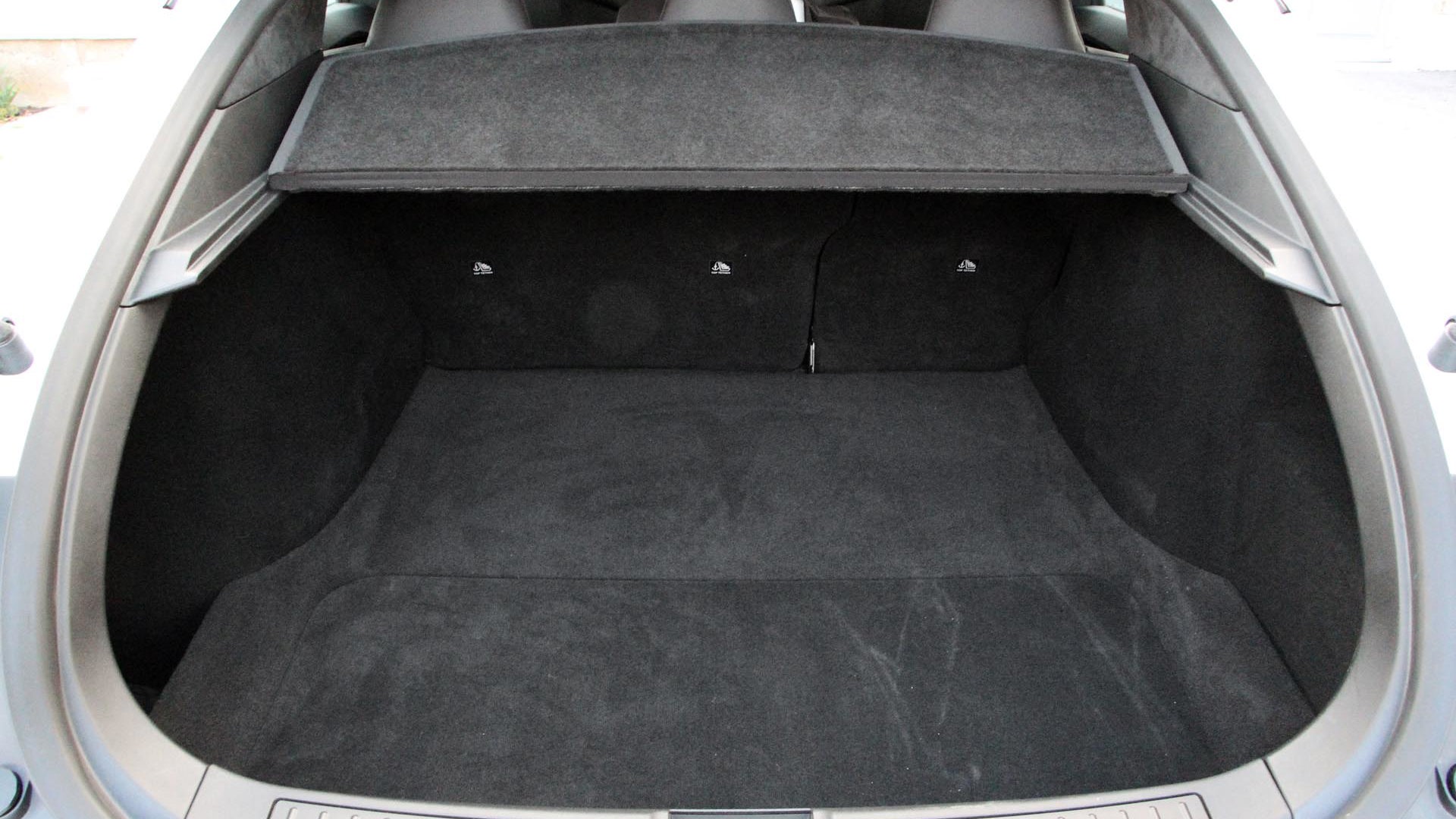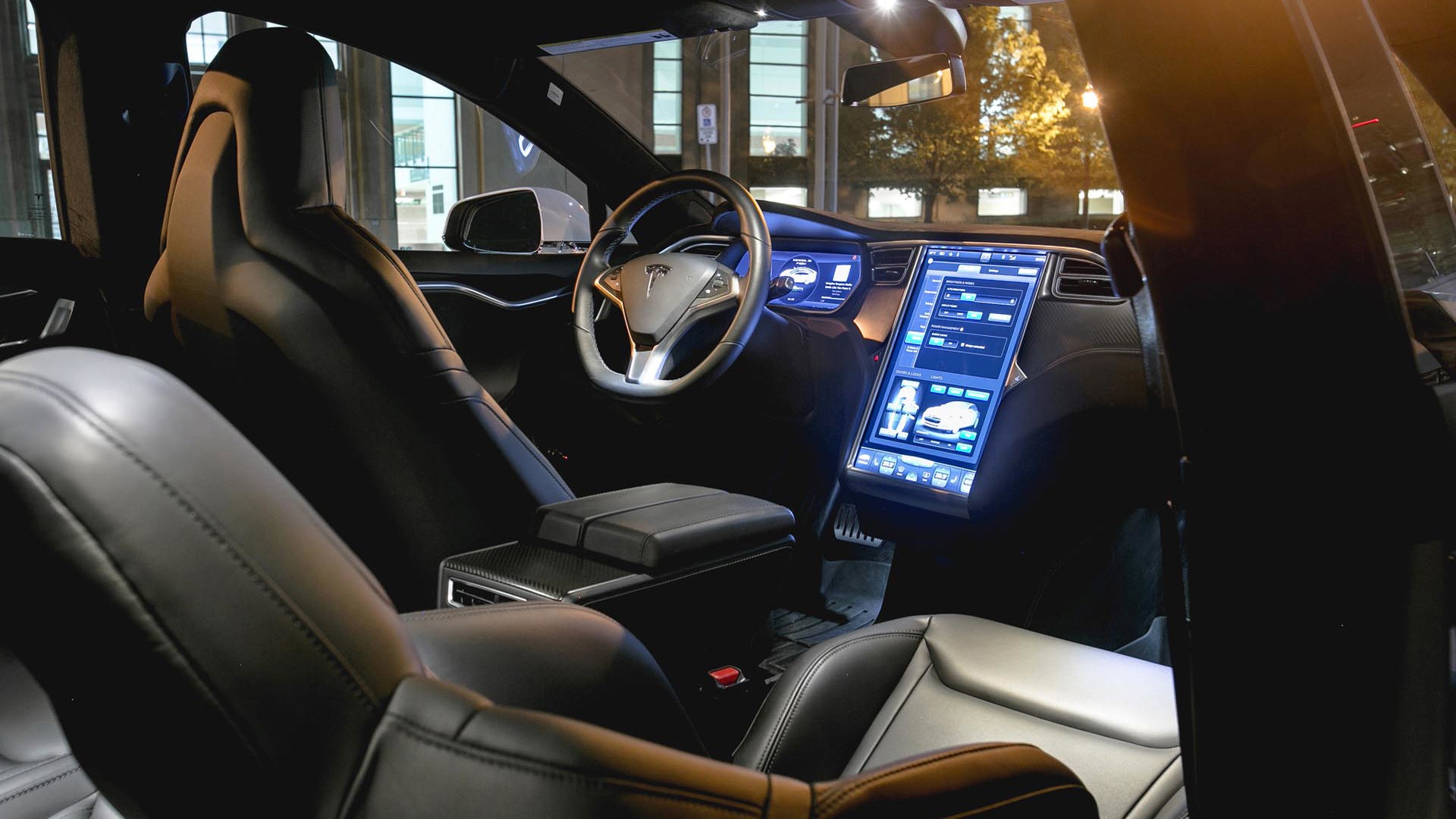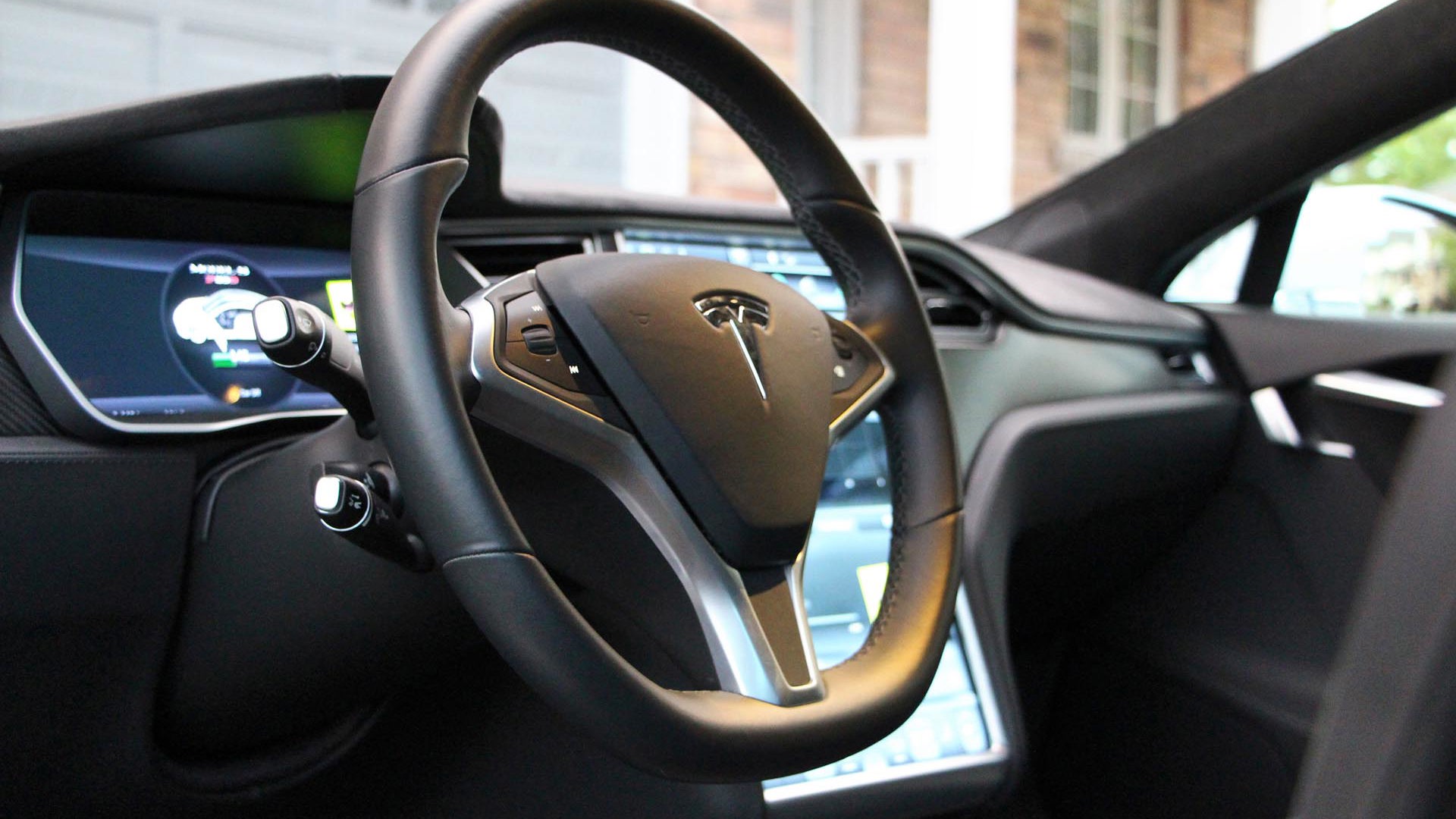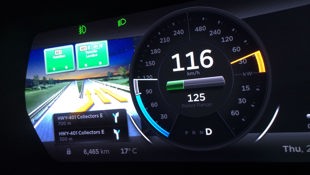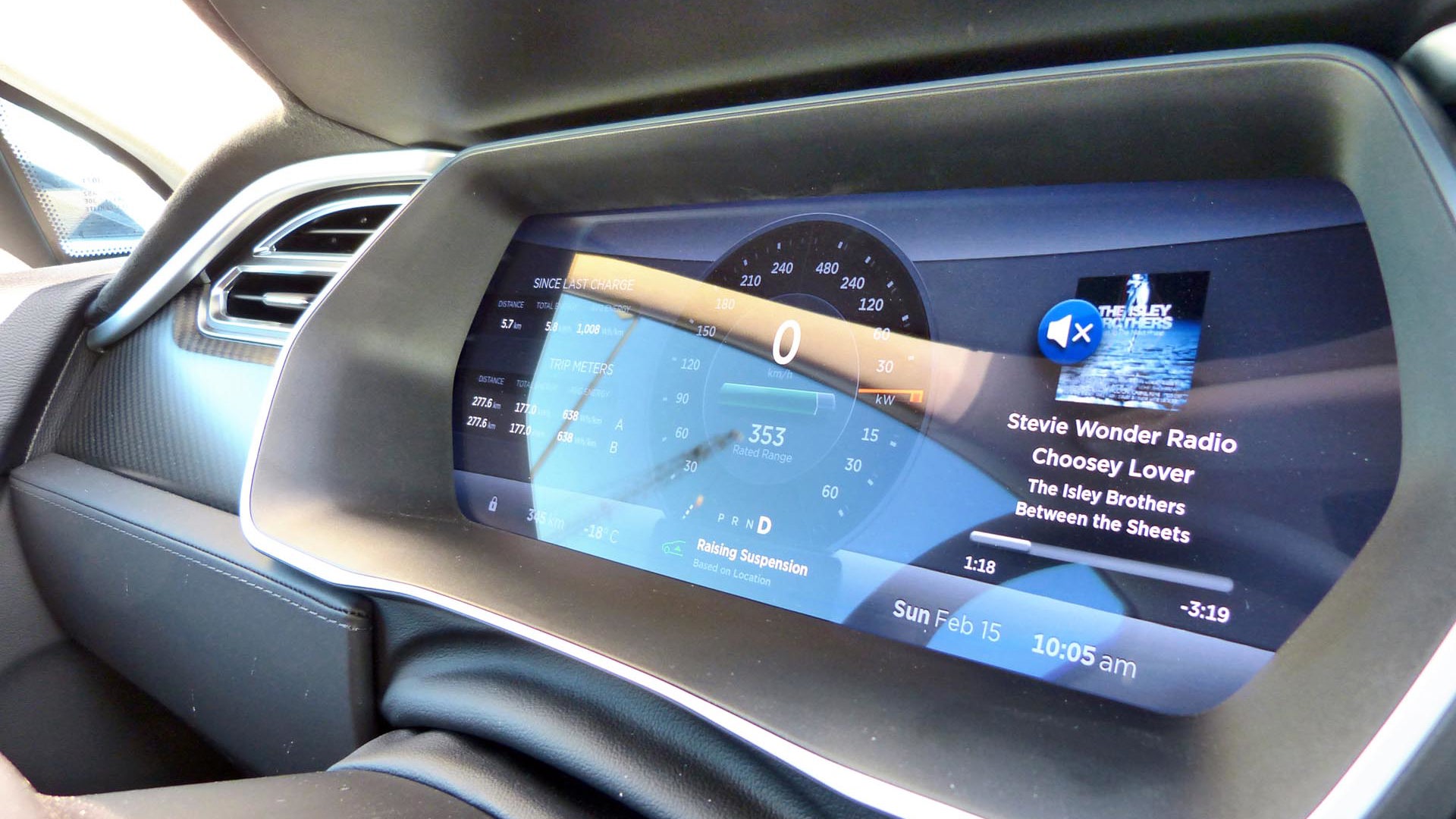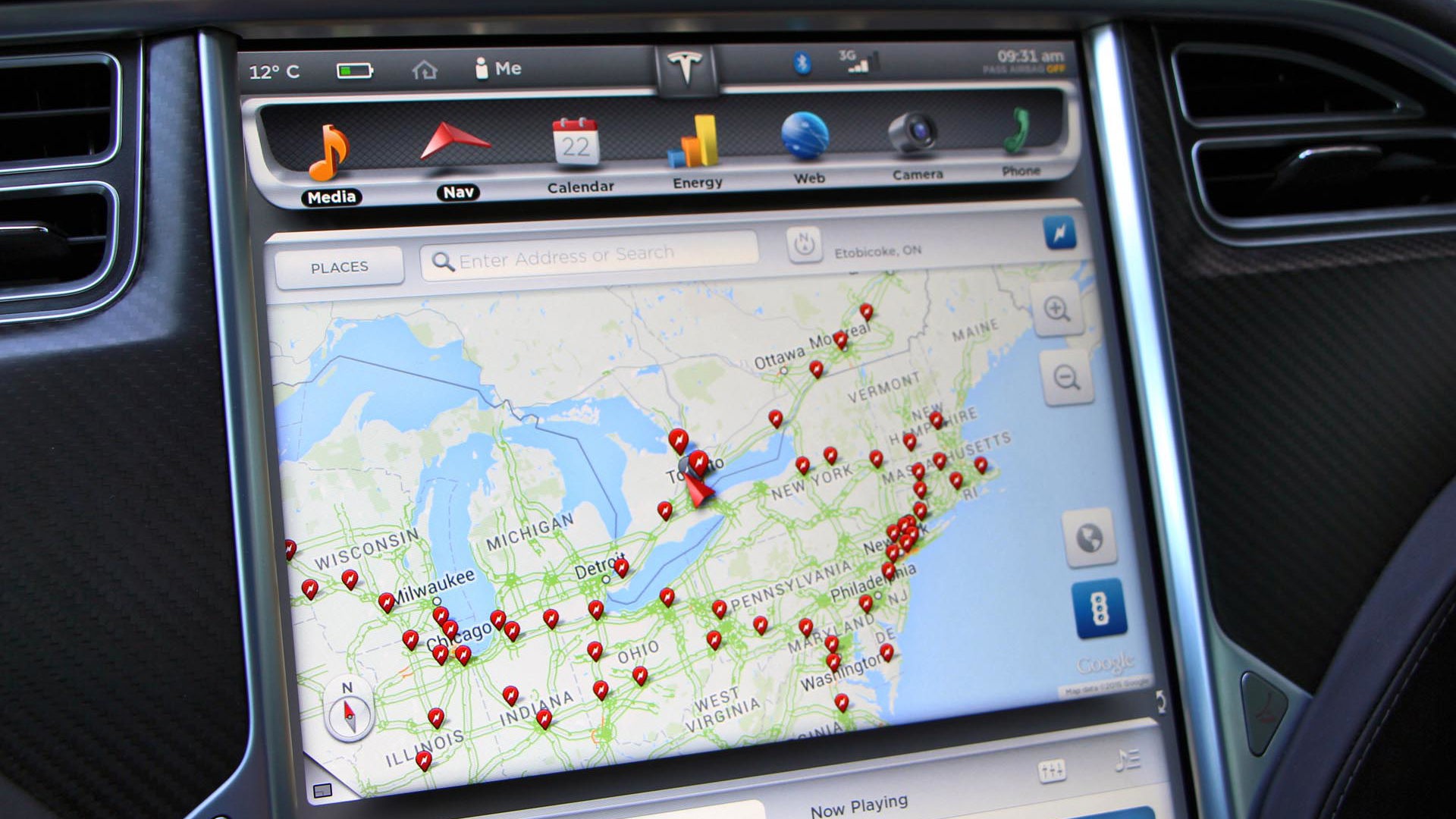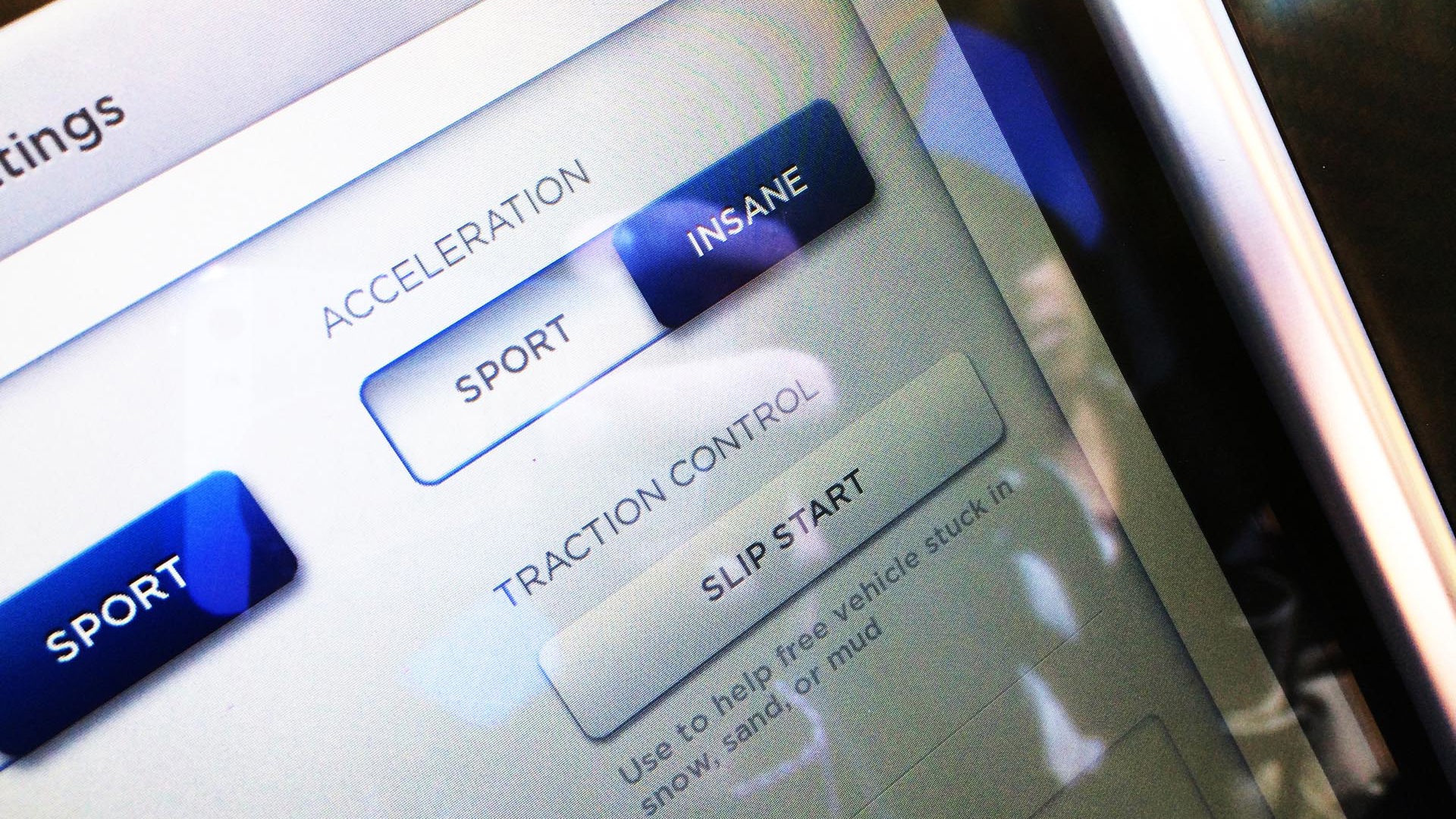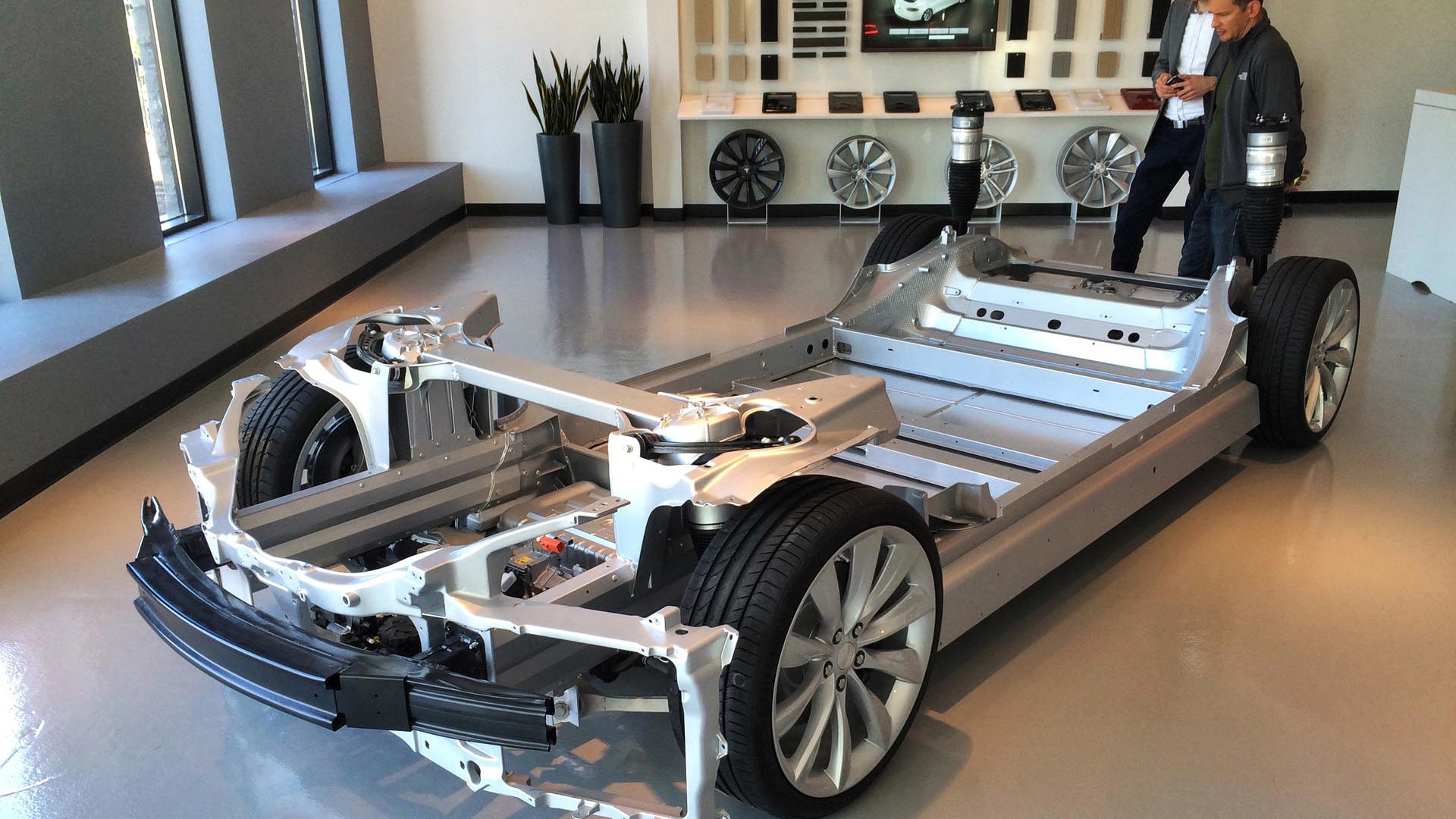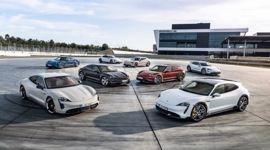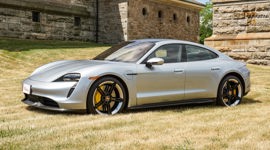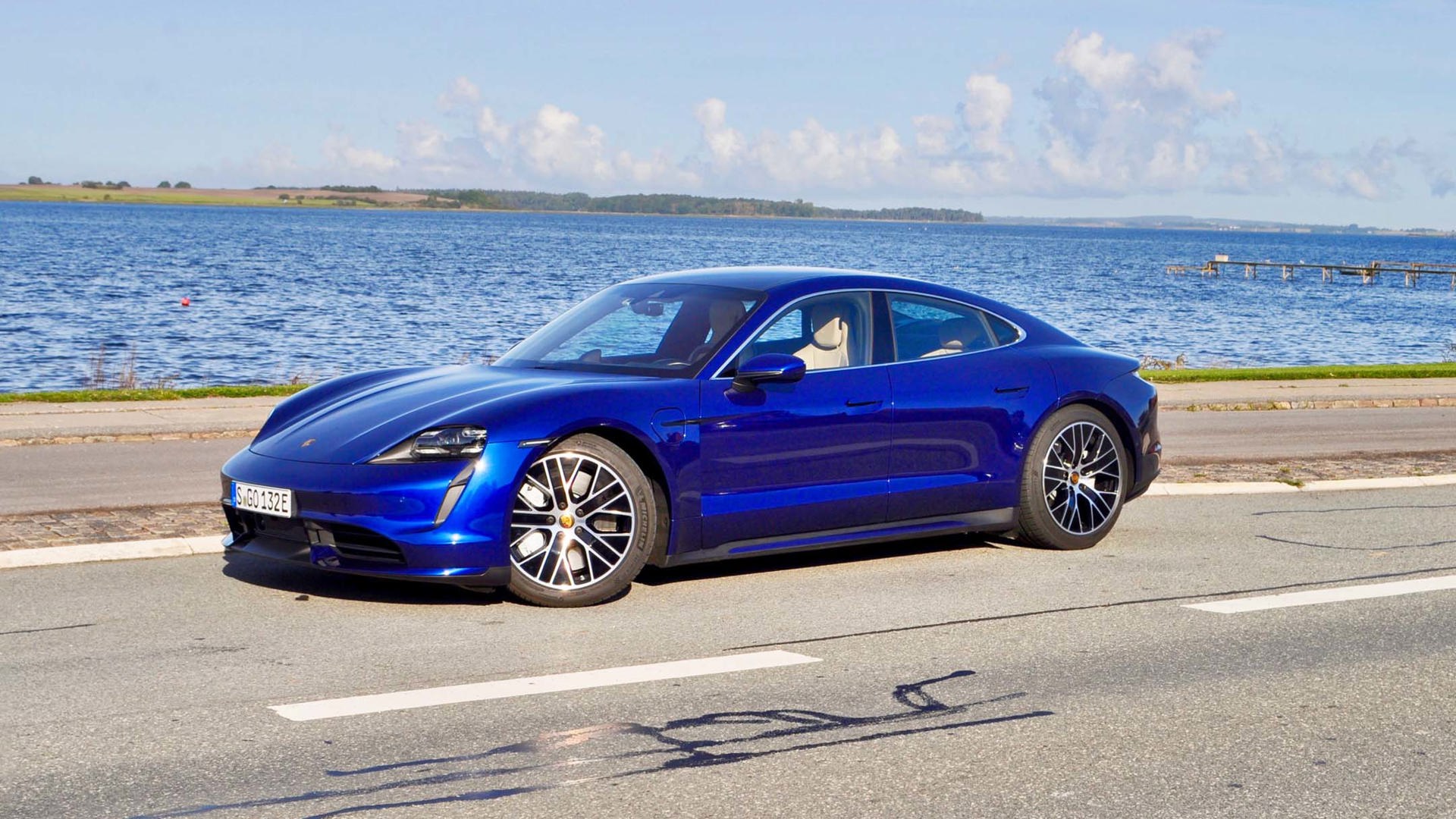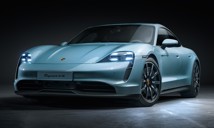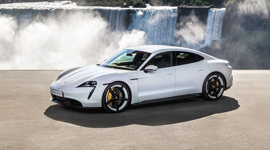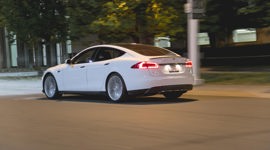Tesla may finally have a worthy competitor to its Model S electric sedan in the way of the new Porsche Taycan – which recently debuted to much fanfare after a lengthy teaser campaign from the German sportscar manufacturer.
The Taycan, which “marks the start of a new era” for Porsche, according to company CEO Oliver Blume, is a four-door, four-seat battery-electric sports sedan and the first fully electric production vehicle to wear a Porsche badge.
But is Porsche, a newcomer to the electric car scene, truly capable of taking on the EV experts over at Tesla? We won’t know until we can climb behind the wheel of the new Taycan, but for now, let’s compare these two vehicles’ respective specifications to see which is more impressive on paper.
Performance/Battery
Porsche Taycan
The Porsche Taycan will be available in two trim levels from launch: Taycan Turbo and Taycan Turbo S. Both models will feature a 93.4 kWh lithium-ion battery pack and an innovative 800-volt system architecture. Compared to a typical 400V system like in the Model S and other EVs, the 800V system can charge much faster. Porsche says a Taycan plugged into one of its high-power charging stalls can add 100 kilometres of range in just five minutes and fill the battery to 80 percent capacity in just 22.5 minutes. These time estimates were calculated based on ideal charging conditions, it should be said.
While they have the same size battery, the Taycan Turbo and Taycan Turbo S differ in the performance department. Both feature a dual-motor drive system and all-wheel drive; however, the Taycan Turbo is rated at 670 horsepower, whereas the Taycan Turbo S makes a staggering 750 horsepower. Porsche says the Turbo will accelerate from zero to 100 km/h in 3.2s, while the Turbo S is good for a 0–100 km/h time of just 2.8s. Both have an electronically limited top speed of 260 km/h.
That added bit of performance has a negative affect on range, however. While the Taycan Turbo will travel an estimated 450 kilometres on a single charge, the Turbo S is only good for 412 kilometres.
It is also worth noting the Taycan is the first production EV with a two-speed gearbox. The low gear in the transmission is for acceleration and lower speeds, while the high gear is used for efficiency and for travelling at high speeds.
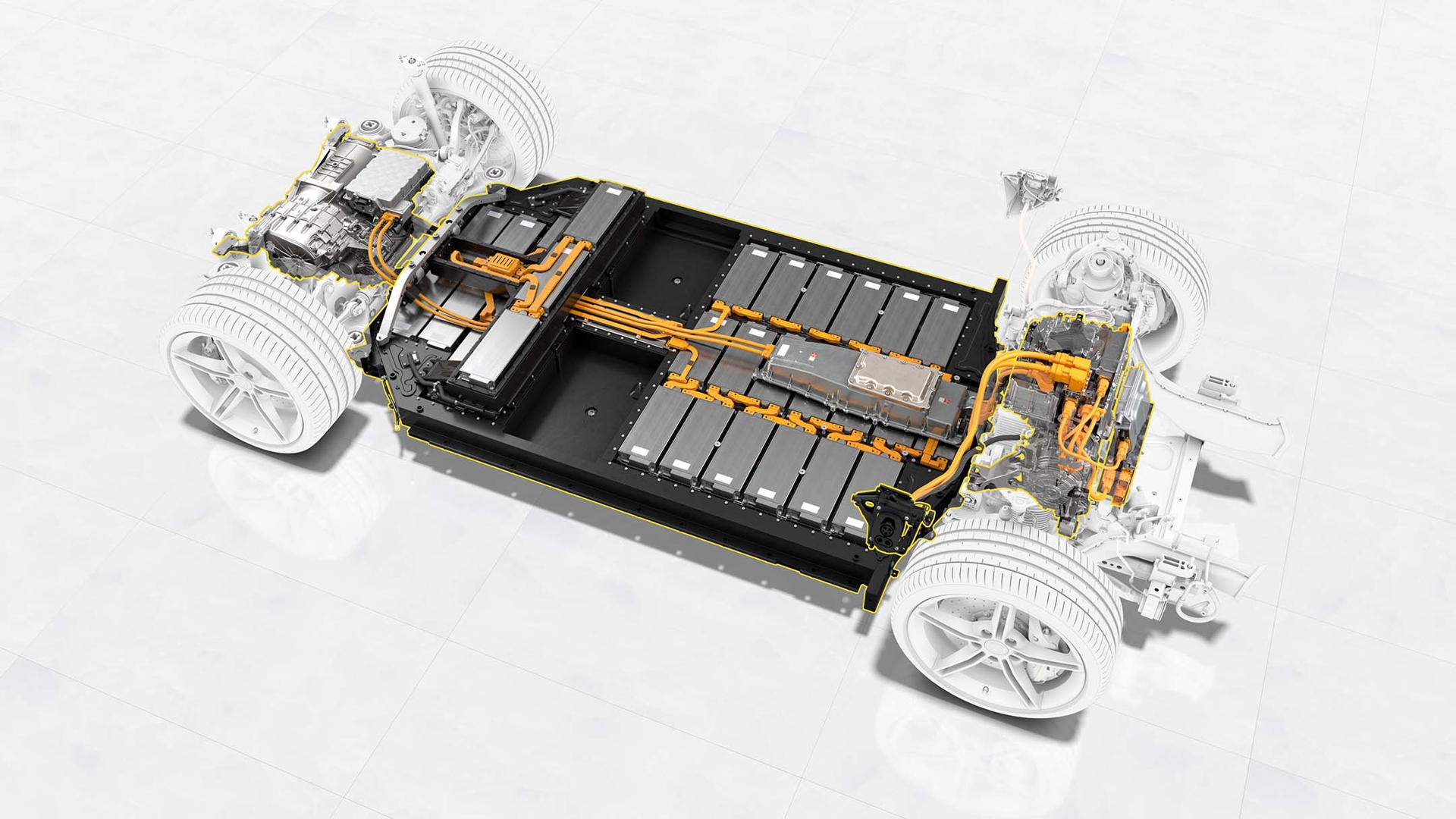
Tesla Model S
The Tesla Model S is also available in two trim levels: Long Range and Performance. The Long Range trim comes with a 100 kWh lithium-ion battery (running a less advanced 350V architecture) along with a 417 horsepower dual-motor drivetrain and all-wheel drive. Charging the battery using one of Tesla’s powerful 120 kWh Supercharger stations can add 273 km of range in around 30 minutes – charging from flat to full would take around an hour. The Performance variant, meanwhile, has a more powerful 773 horsepower dual-motor drive system – though the 100 kWh battery pack and 350V electrical system remains identical.
The Model S Long Range can accelerate from zero to 100 km/h in around 4.0s, while the Performance gets the race to 100 over with in just 2.4s. The Long Range is limited to 249 km/h, while the Performance will accelerate until it hits 262 km/h.
Verdict
The Tesla Model S Performance has faster acceleration than the Taycan Turbo S, although both have comparable top speeds. Porsche promises the Taycan will be able to perform multiple heavy acceleration runs in succession and also drive multiple laps on a racetrack without the battery becoming too hot – a problem that has plagued other EVs in the past, including the Model S. Conversely, the Model S seems to still be the EV to have if you value having lots of range, although the Porsche somewhat makes up for its lower range with its much faster charge times.
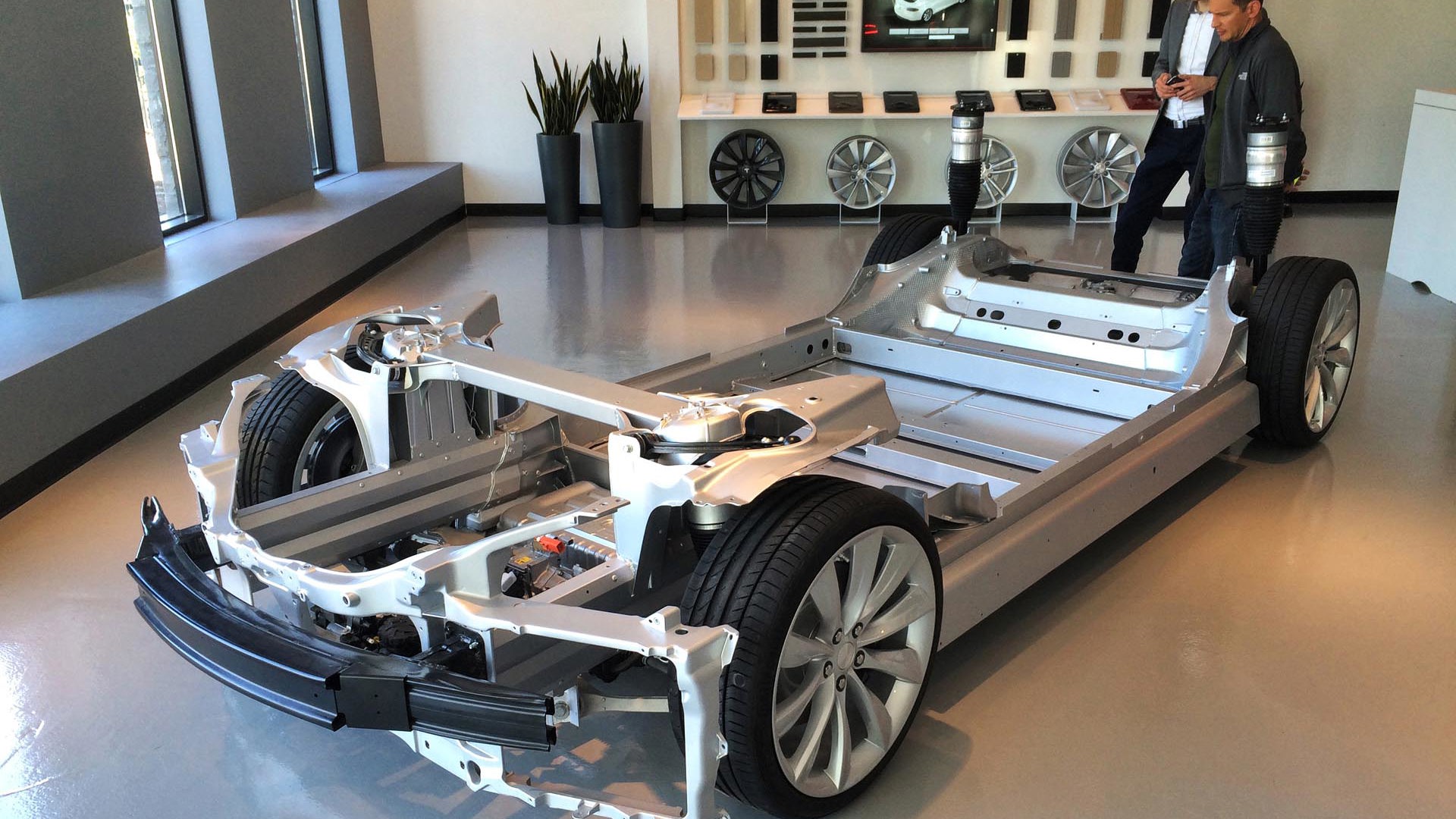
Dimensions
Porsche Taycan
The Porsche Taycan is a mid-size sedan with seating for four and measures 4,963 mm in length. Porsche has not released the interior dimensions of the vehicle yet, although it does appear to be a bit more cramped inside than the Model S thanks to its low, sloping roofline and bolstered sport seats. It has a frunk capacity of 81 litres and total rear trunk volume of 365 litres.
Tesla Model S
Like the Taycan, the Model S is also a mid-size, four-door sedan, but with seating for five. It’s virtually the same length as a Taycan, coming in at 4,980 mm. It has way more room for your stuff, however, with a trunk volume of 744.7 litres and a frunk volume of 59.4 litres cubic feet. We expect the Model S to have superior headroom as well, along with some additional leg and shoulder room – pending published figures from Porsche. The less sporty seats also look to be a bit better suited to a larger variety of body types.
Verdict
Despite the limited measurements available right now, it’s immediately clear that the Taycan has smaller dimensions and was designed from the outset to be a four-door “coupe”, whereas the Model S has more traditional sedan dimensions and is quite cavernous inside. The Model S also has much more cargo capacity.
Interior/Technology
Porsche Taycan
The Porsche Taycan’s interior is dominated by digital display screens, with a central, 10.9-inch infotainment display and an optional passenger display combining with the digital instrument cluster to span the width of the cabin. A touch-operated display also houses controls for other important items like the heating and A/C, doing away with switches and buttons wherever possible. If you don’t want to use the touch controls, a voice-activated AI can adjust the desired settings for you.
This is a Porsche, so most of the technology you’d find in something like a Cayenne or Panamera is available here. Ventilated and massaging front seats, a heated steering wheel, a 1,455-watt Burmester stereo and other optional extras are all on offer. It also has available Porsche Active Suspension Control adjustable dampers, Porsche Dynamic Chassis Control roll stabilization, and Porsche Dynamic Torque Vectoring Plus to help out when on the race track.
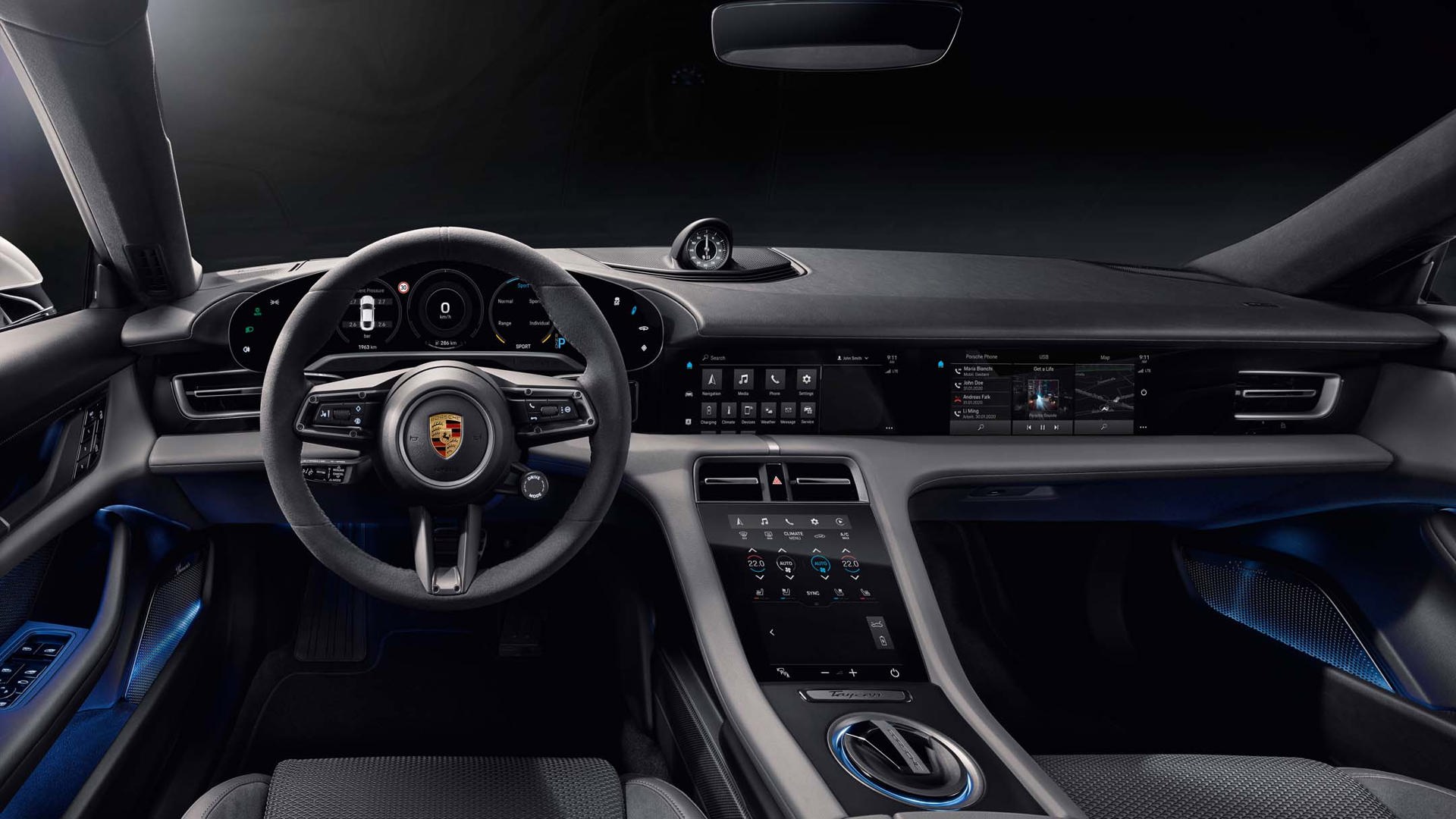
Tesla Model S
Comparatively, the Tesla Model S has quite a bit less going on than the Taycan inside, although its massive 17-inch touchscreen sits front-and-centre and is joined by a digital driver’s display. These screens are a good bit older than the Taycan’s, though, so we’re expecting the Porsche’s to look a bit crisper with superior resolution.
The Model S’ available technology and equipment isn’t as impressive as the Taycan’s, but it still has standard heated seats in the front and rear, a standard heated steering wheel, and voice-activated controls, among other creature comforts. Tesla’s Autopilot semi-autonomous driving system is offered as an optional as well, of course.
Verdict
Performance technologies offered on the Taycan, such as the active suspension and dynamic chassis control technology, are not found on the Model S. This is perhaps to be expected, as Porsche seems to have taken a more performance-focussed approach with the Taycan, whereas the Model S is designed to be more of a regular sedan. This will make the Porsche a better performance car and the Tesla a better daily driver, if we had to guess.
Pricing
Porsche Taycan
Porsche is not an automaker known for its reasonable prices and the Taycan is really no exception. In Canada, the Taycan Turbo will start at $173,900, while the Taycan Turbo S has been priced from $213,900. Porsche’s notoriously pricey options list can easily push the price of a Taycan Turbo S over $250,000, which is almost unheard of for a mass-produced sedan.
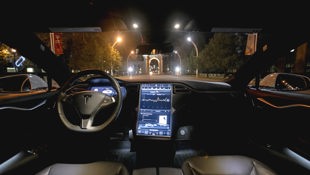
Tesla Model S
The Tesla Model S Long Range starts at $108,990 in Canada, while moving up to the much more powerful Model S Performance bumps the price to $134,990. This is not only much less than the Taycan, but with fewer options available, the price tag is less like to become inflated. The priciest option on the Model S menu is the Full Self Driving semi-autonomous system, which adds $7,900 to the price of the vehicle. 21-inch alloy wheels can tack $5,900 onto the price of Long Range vehicles, though they are standard on the Performance trim.
Verdict
The Tesla Model S is significantly cheaper than the Porsche Taycan, with a fully loaded Model S Performance ringing for nearly the same price as a base Taycan Turbo. While both vehicles are high-priced luxury cars, the Taycan Turbo S has a supercar-like price tag that will likely keep it exclusive to very wealthy buyers, whereas the Model S, even in Performance trim, is a bit more realistic.
Final Tally
Where and how far you drive should also influence the buying decision here. While Porsche plans to install its powerful 800V charge stalls at dealerships and other places it thinks owners will frequent (such as golf courses and hotels) Tesla’s Supercharger network is still an attractive part of buying into the brand, allowing you to make long highway journeys without the need for very much route planning.
Buyers interested in the Taycan may also be smart to wait a couple of years, with the German brand expected to roll out different versions of the EV that may undercut the performance-focussed Taycan Turbo and Taycan Turbo S in price.
